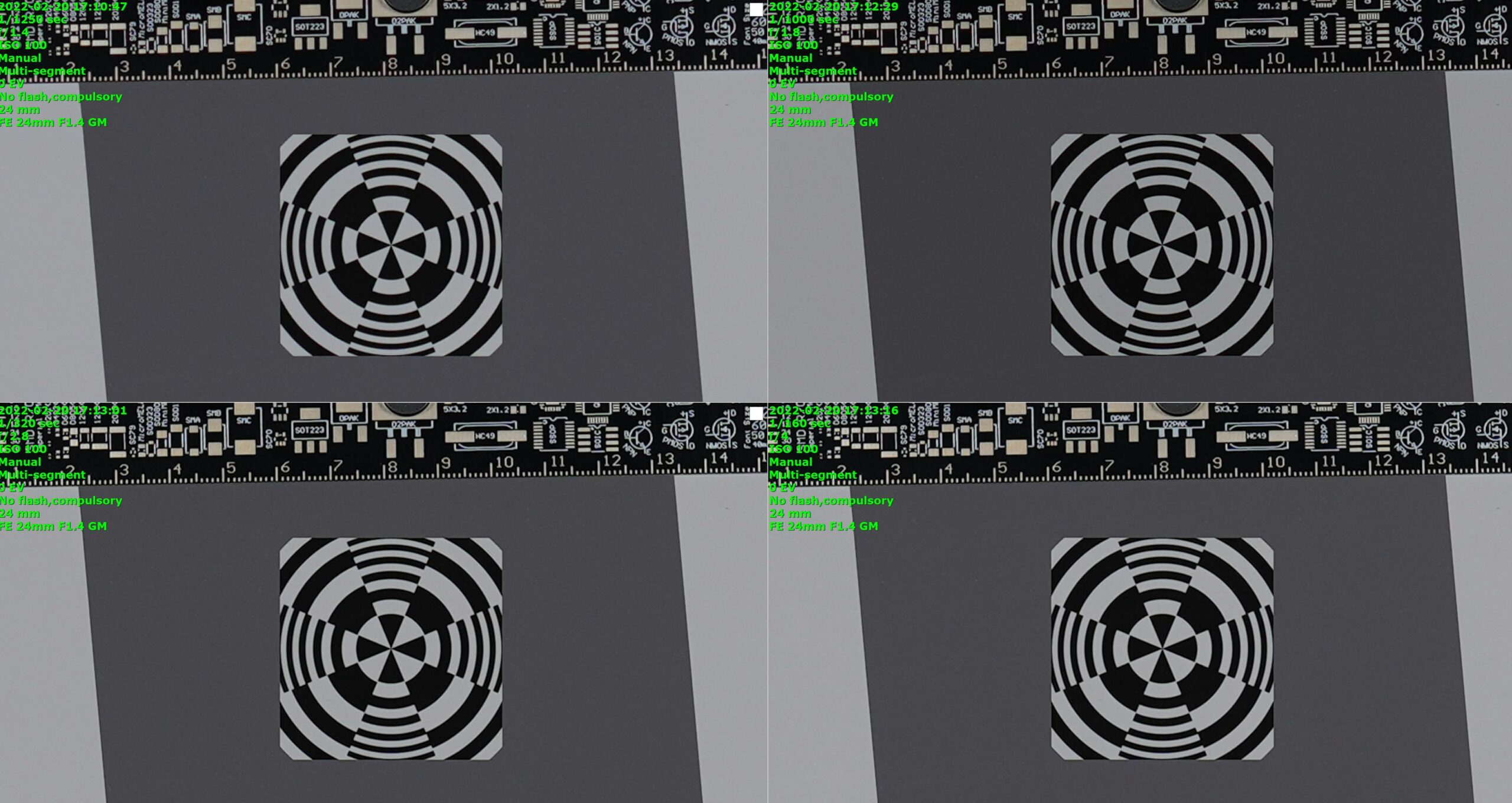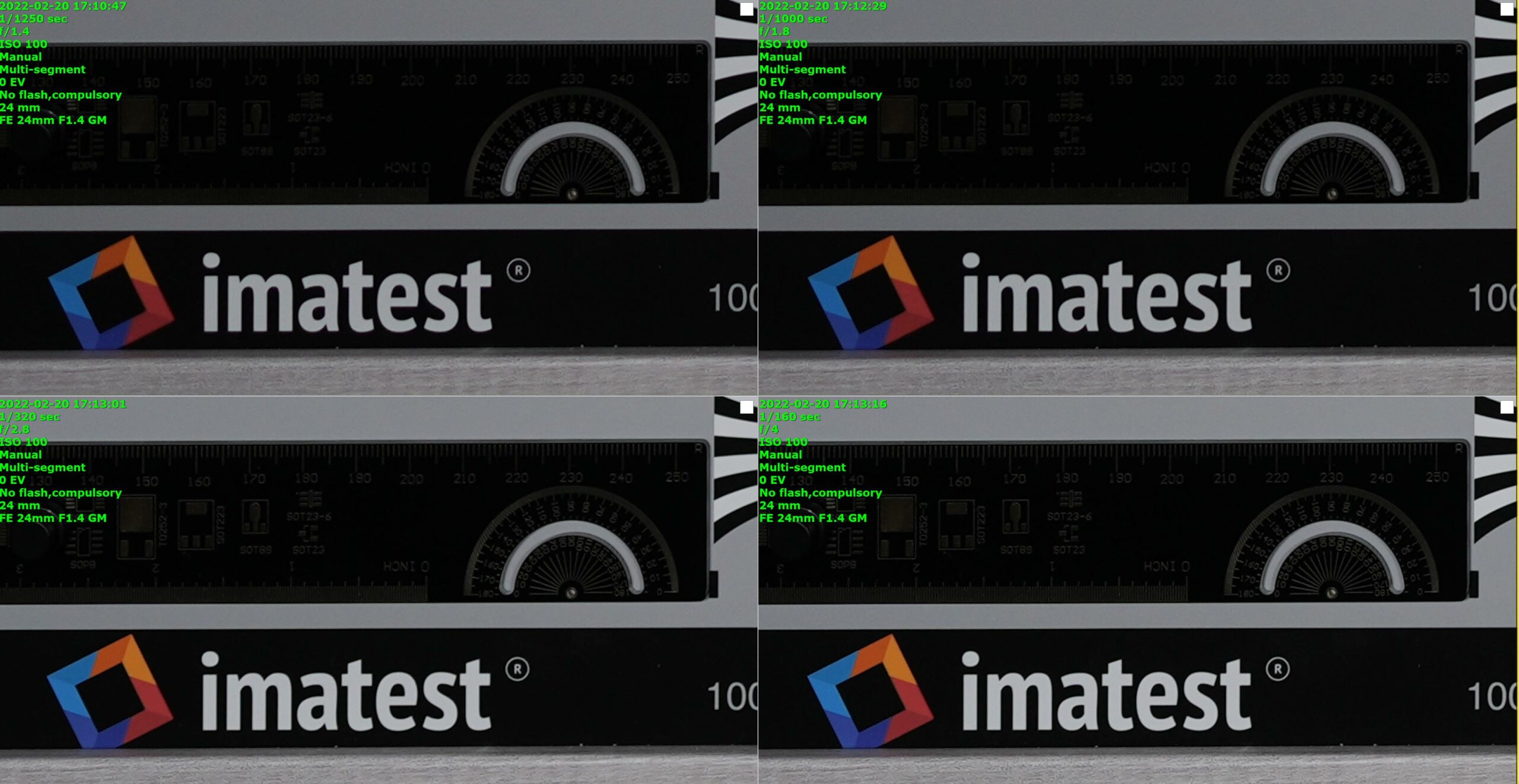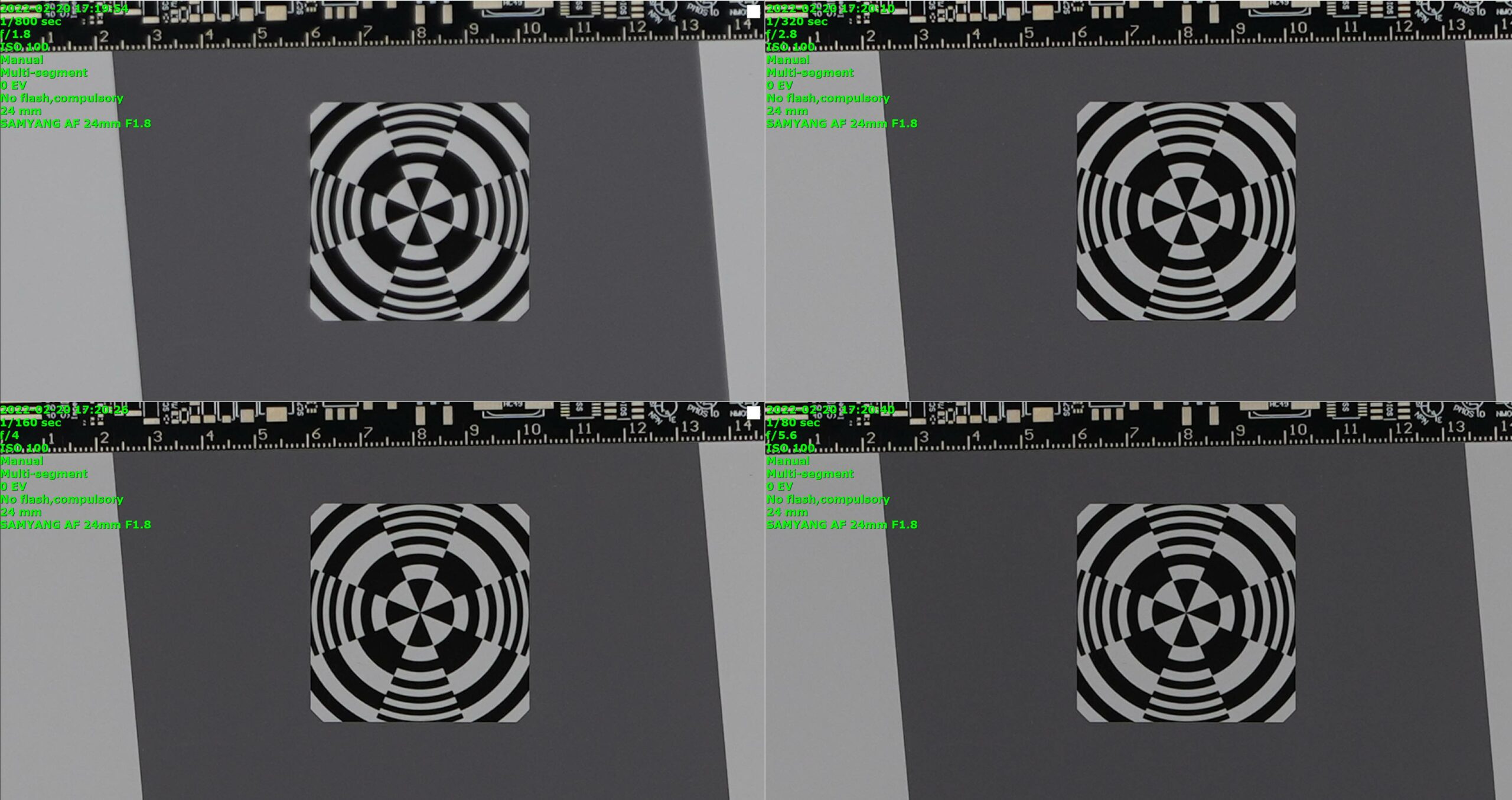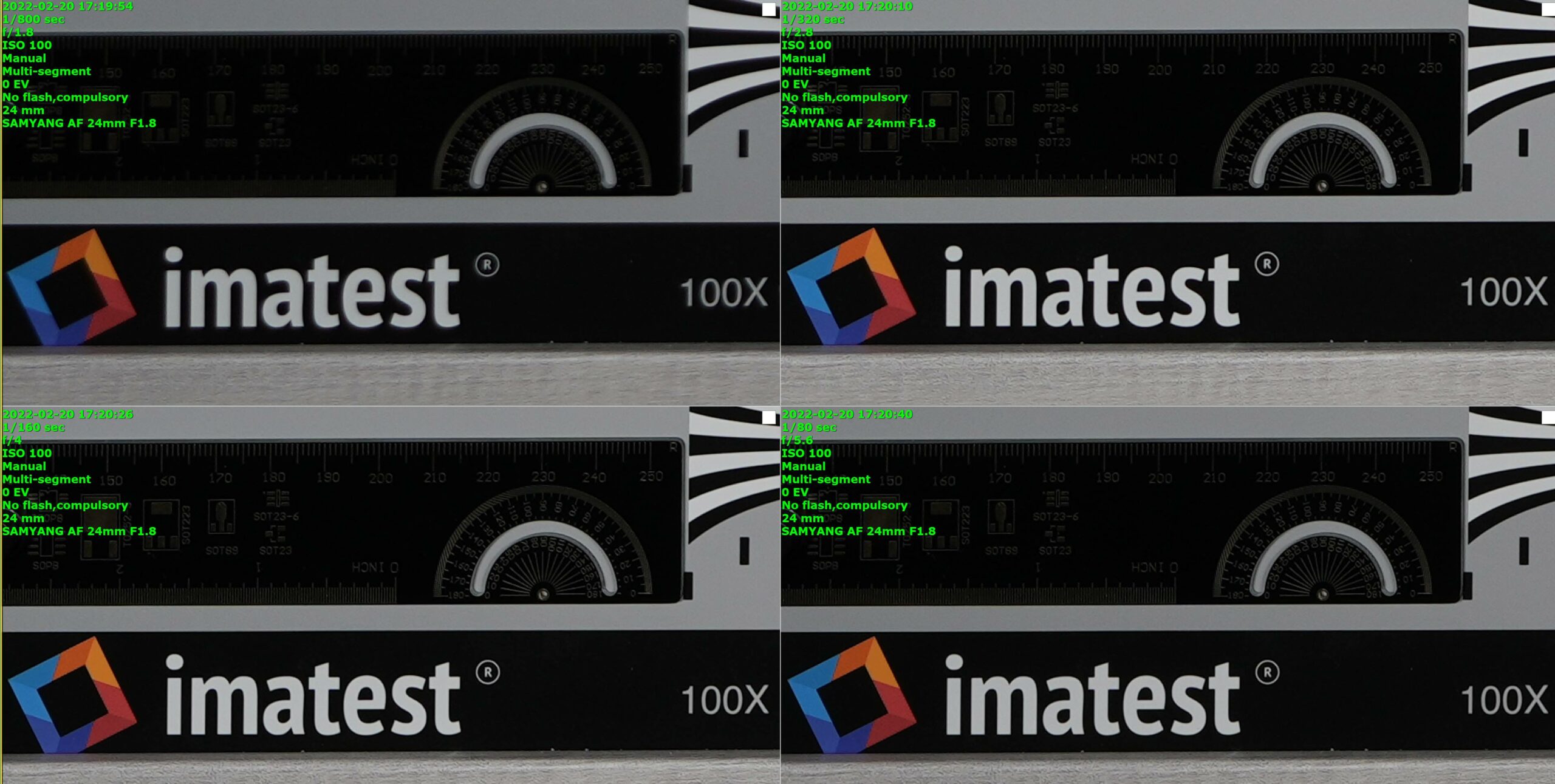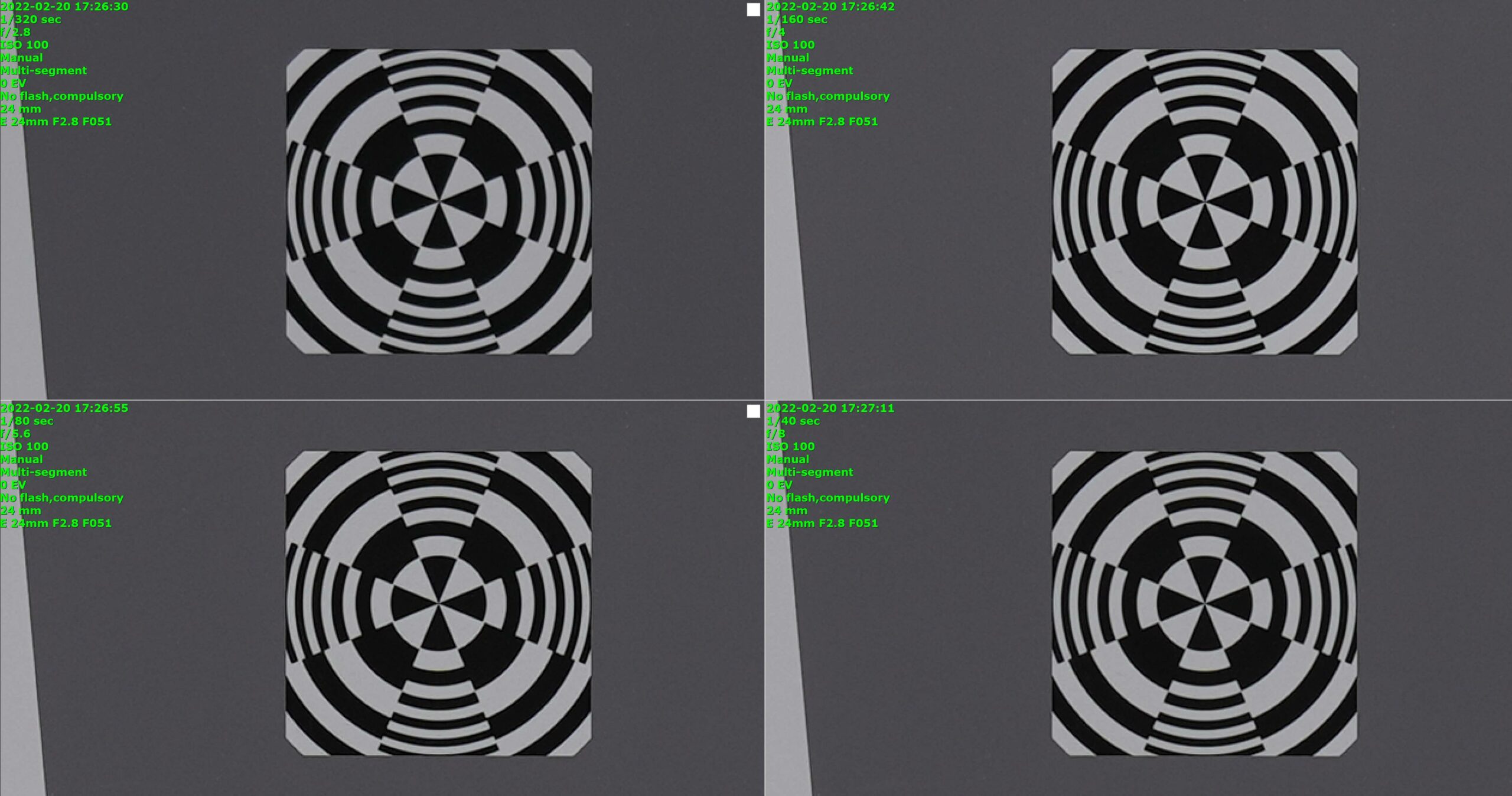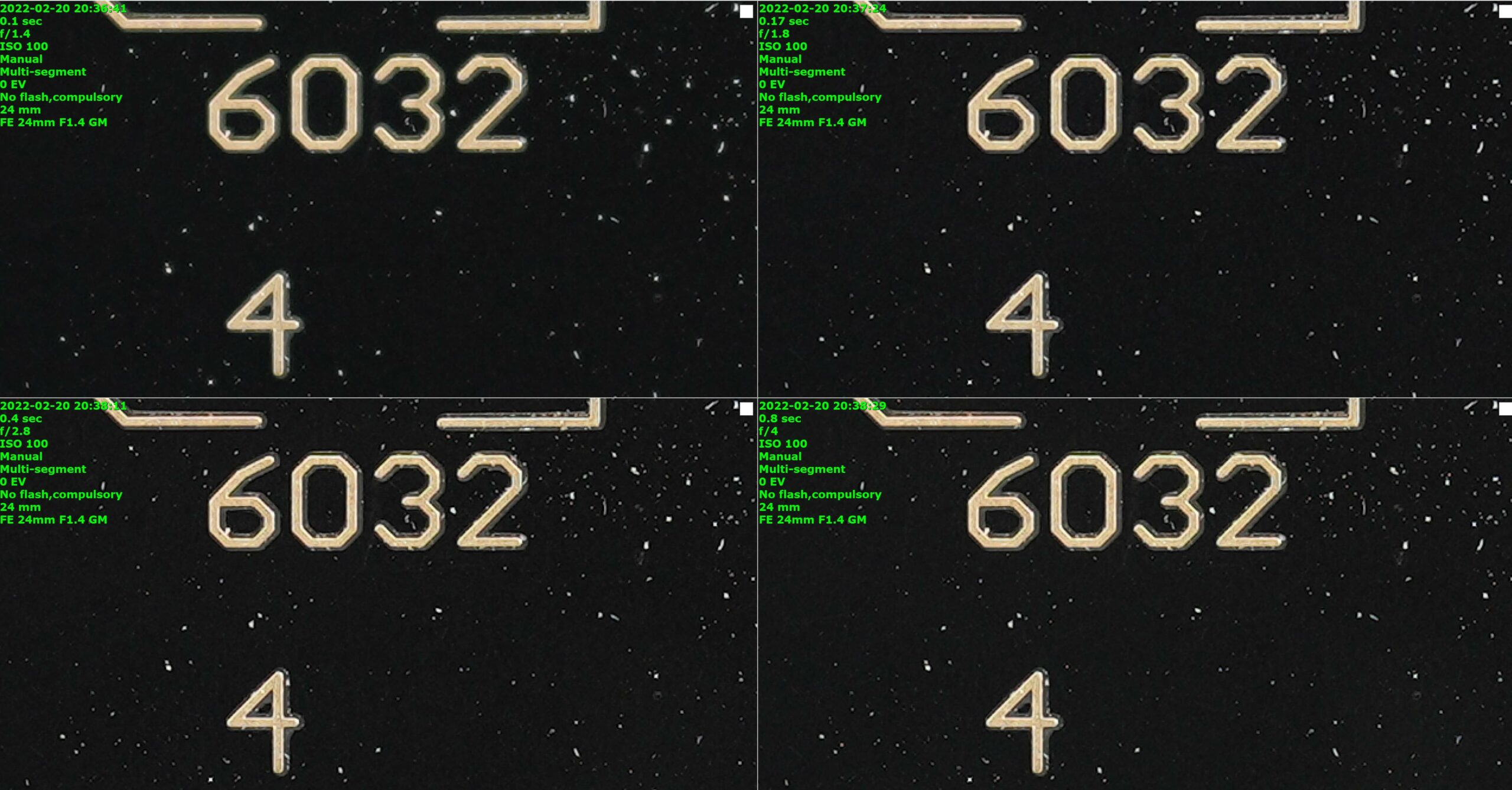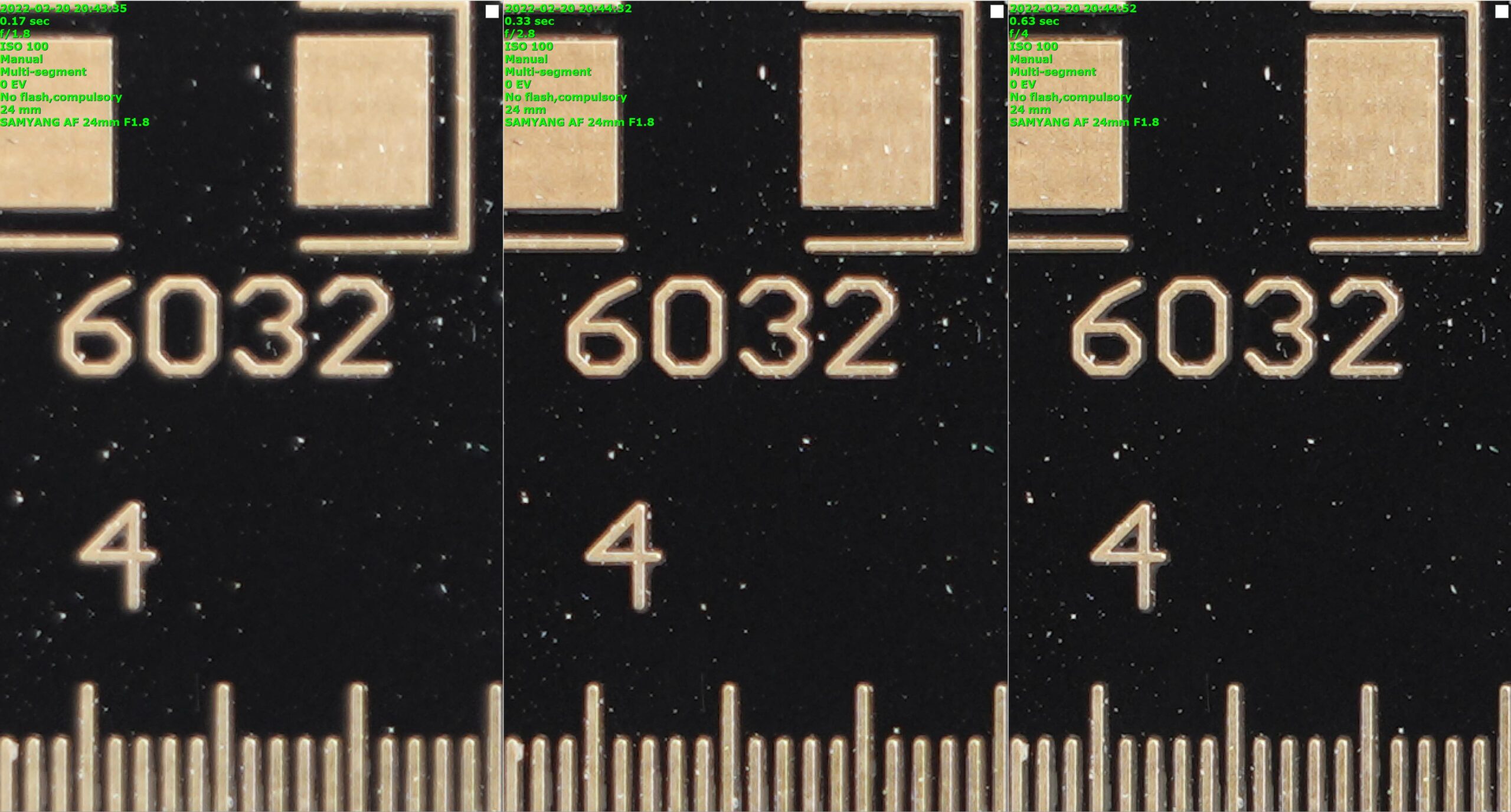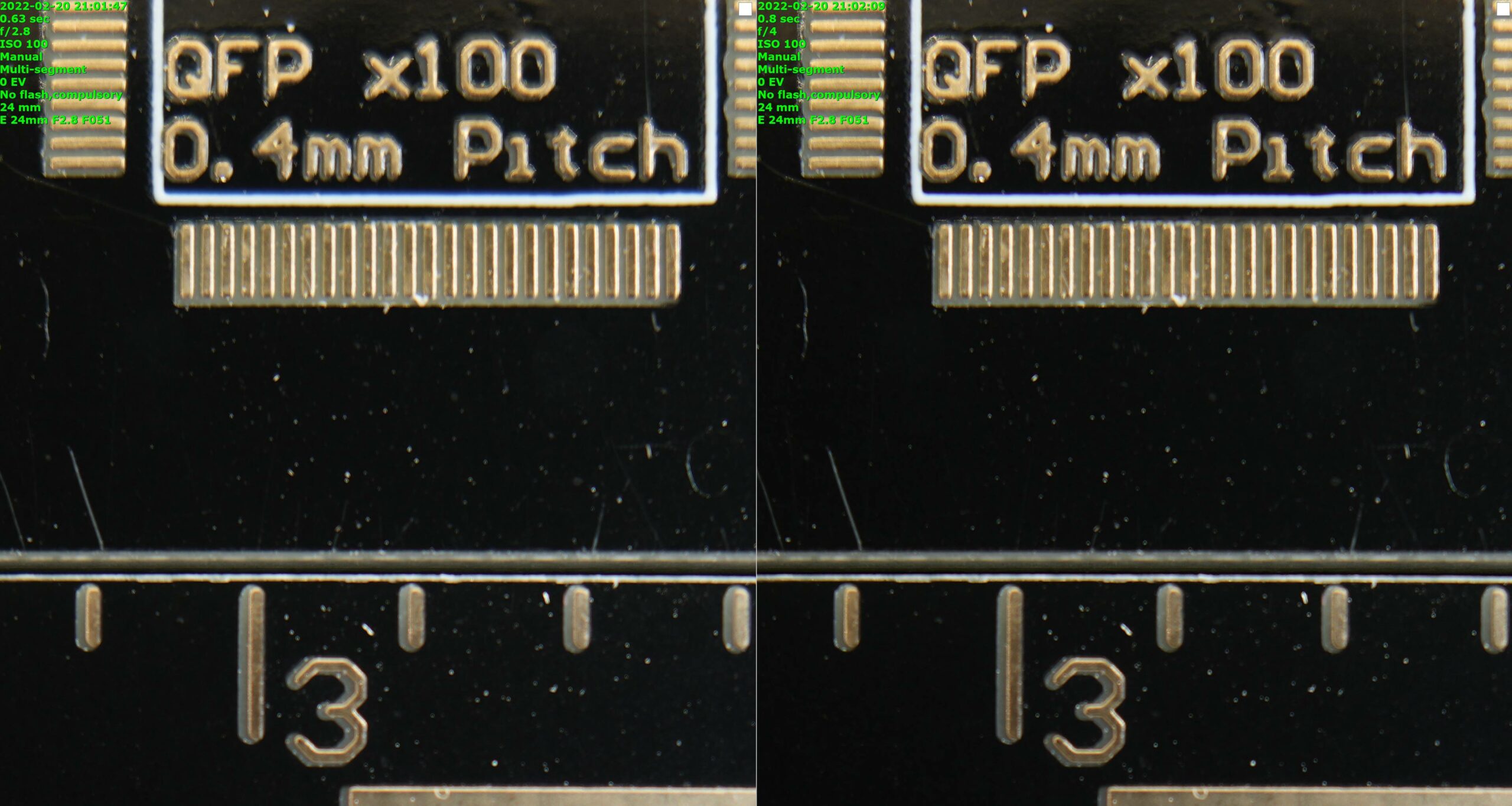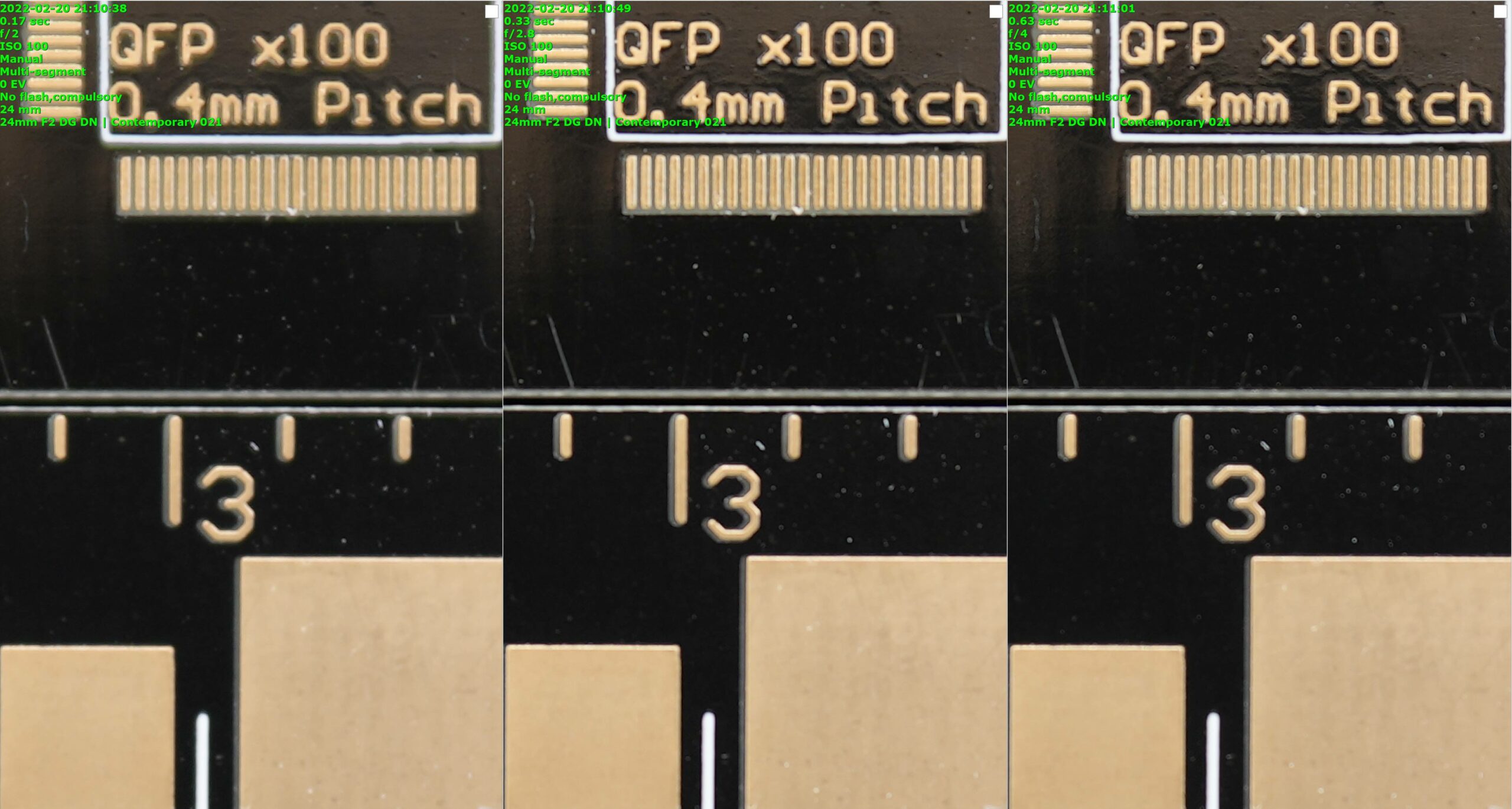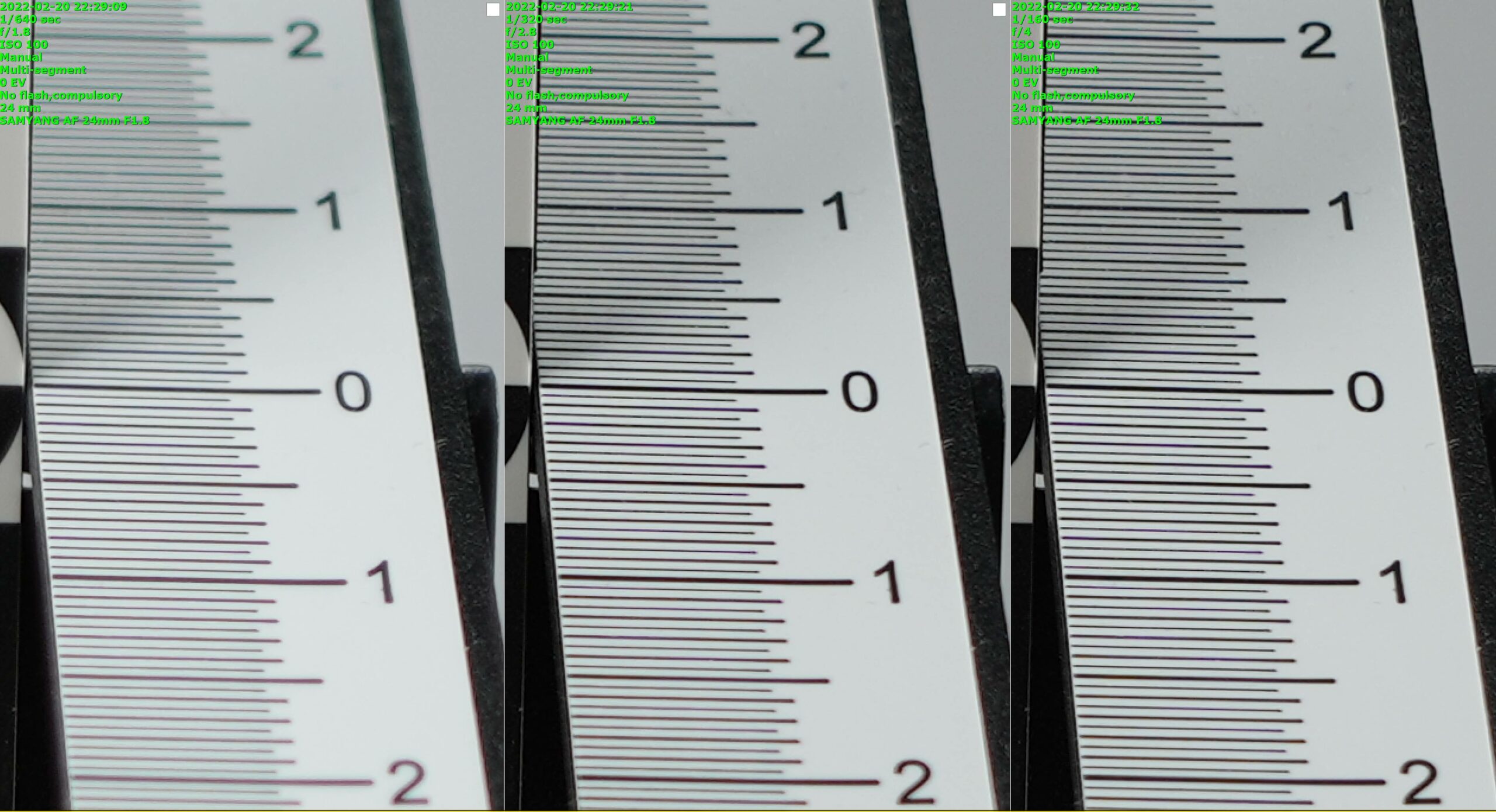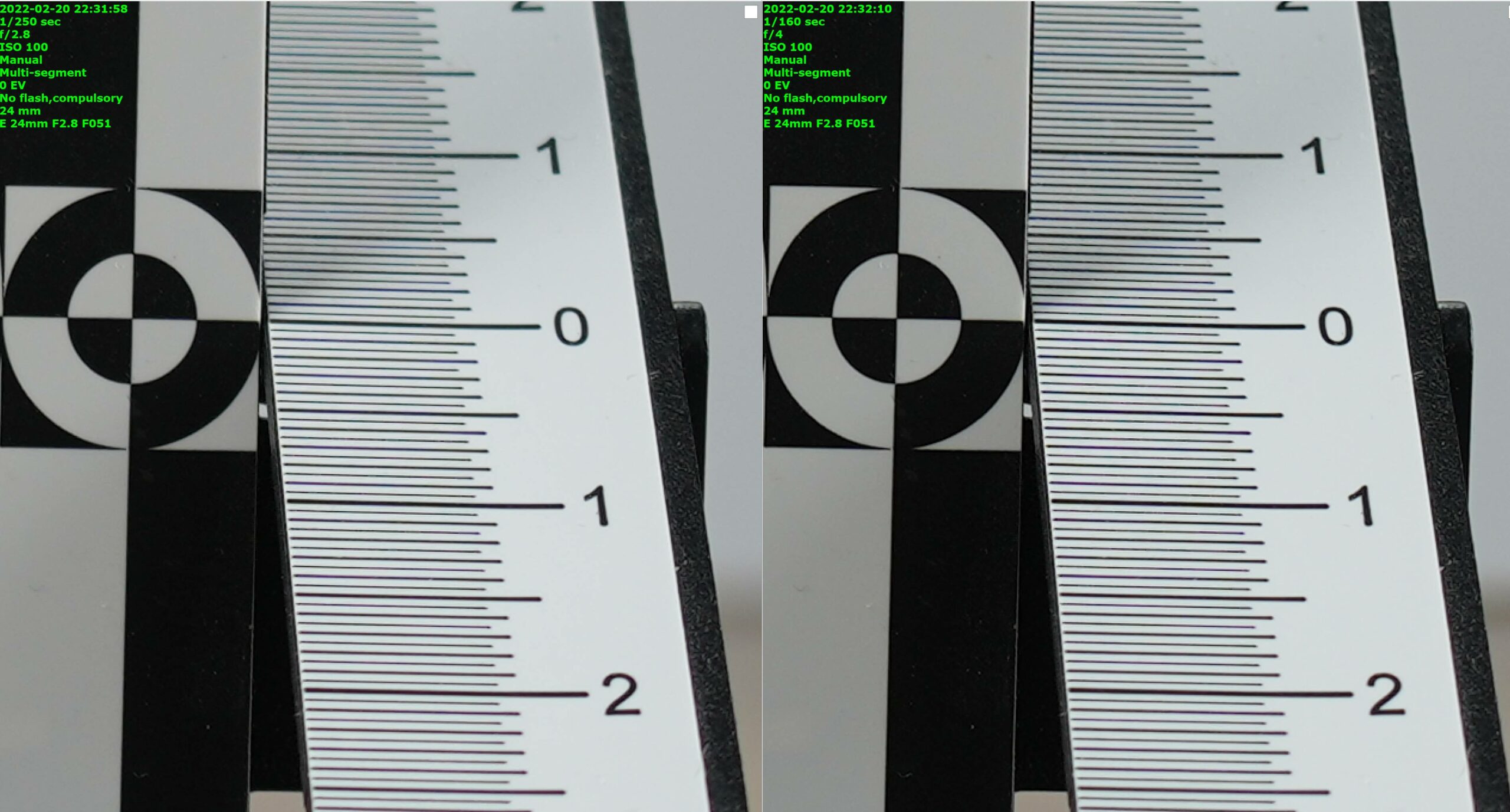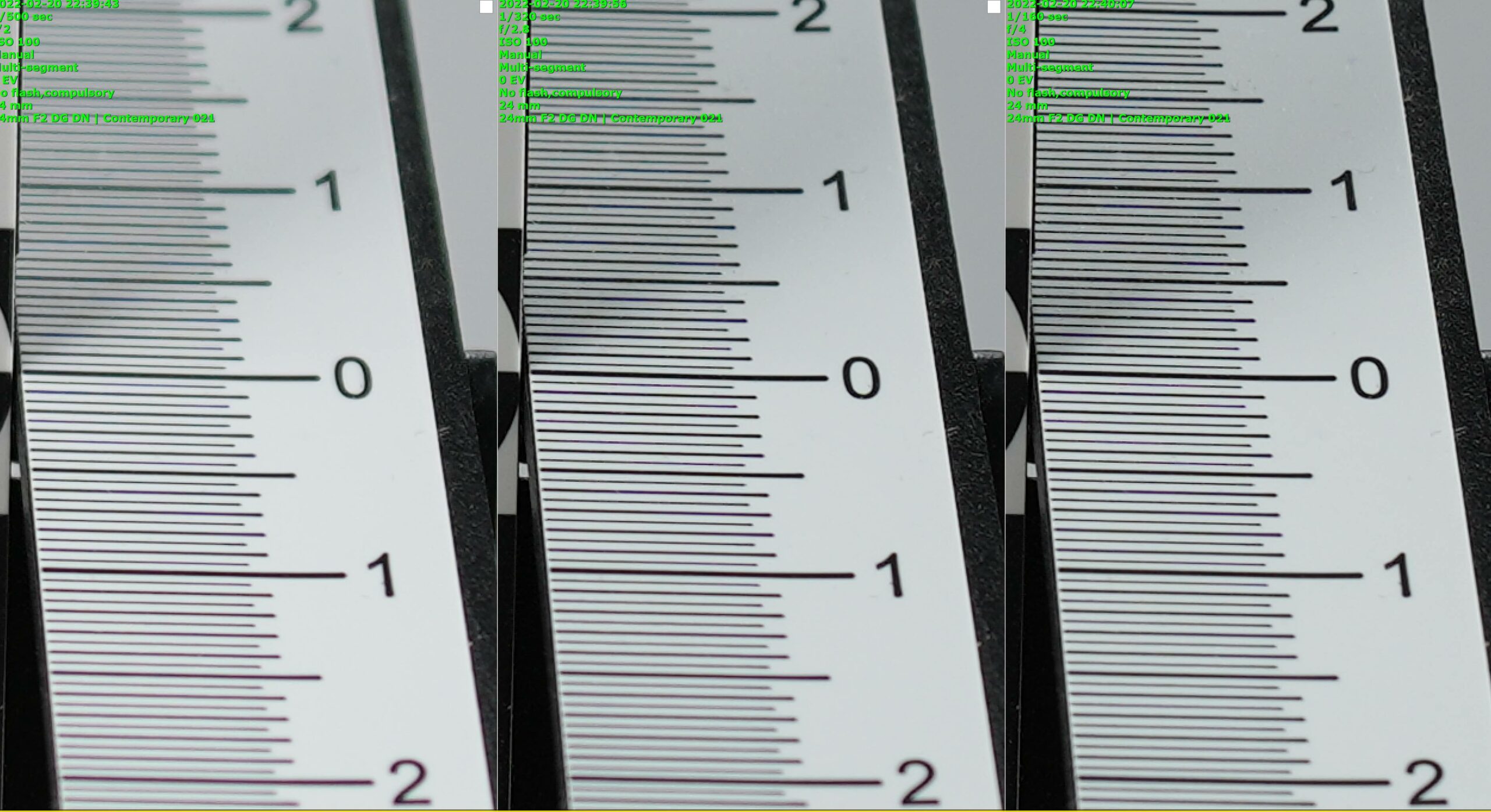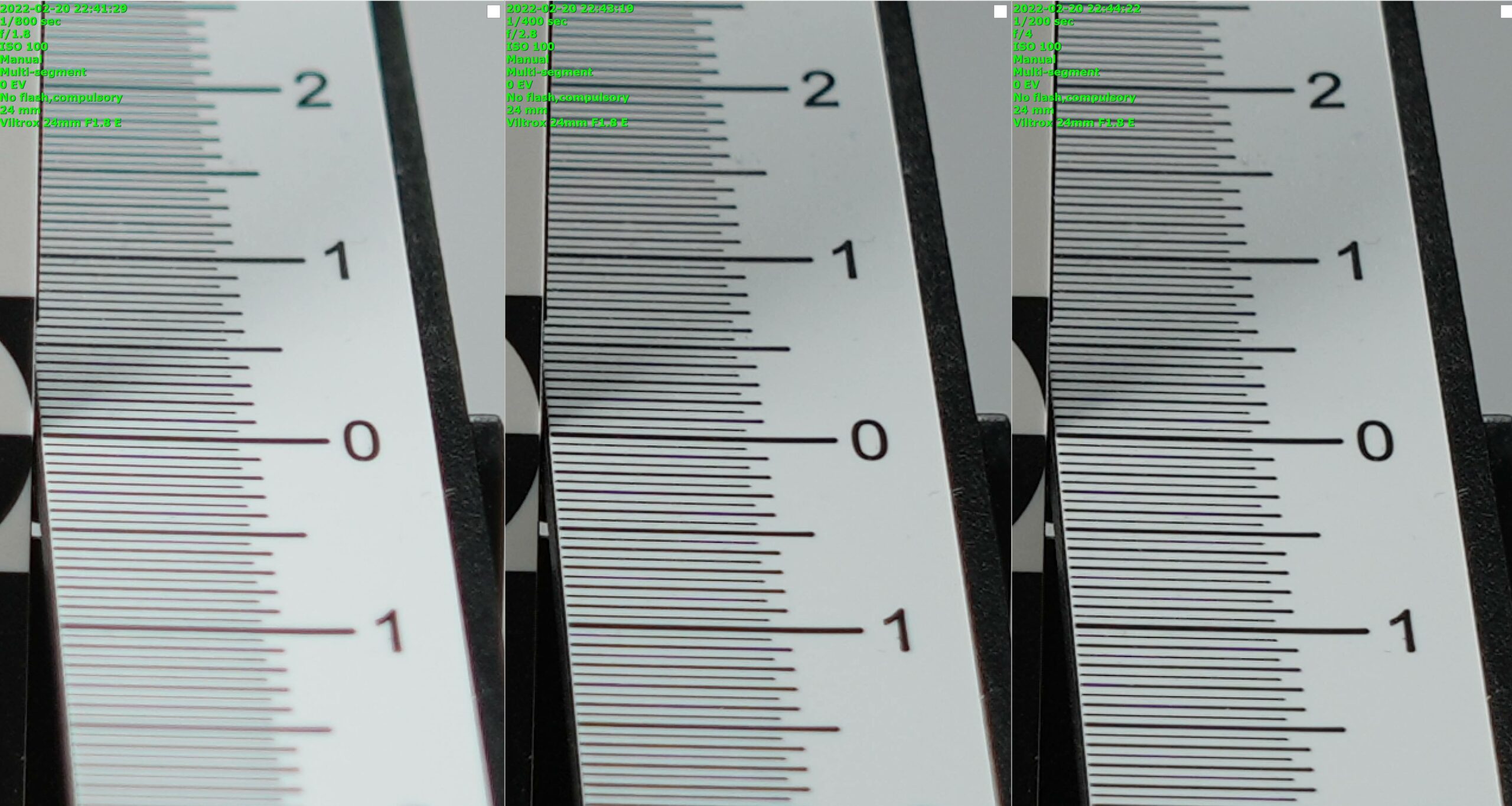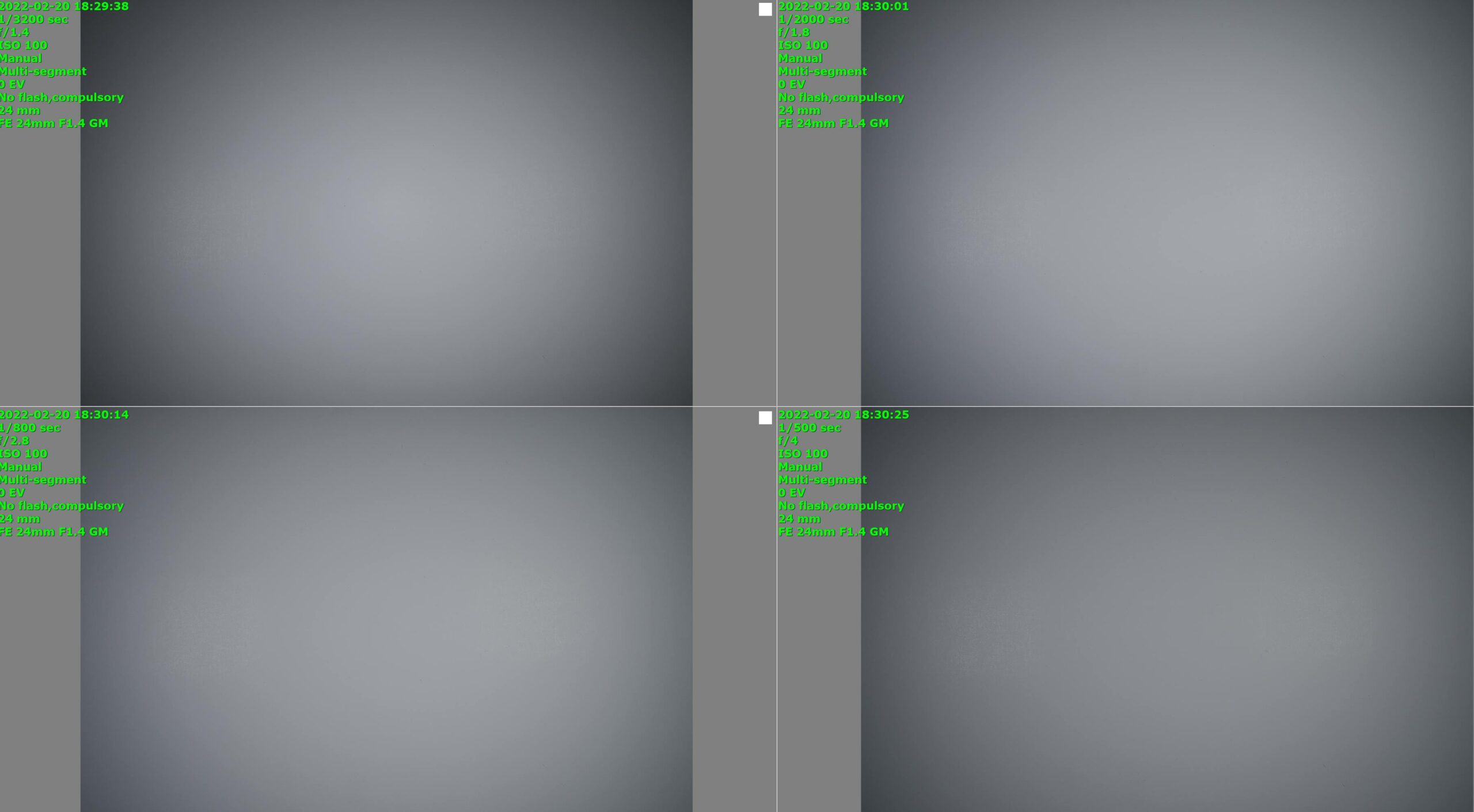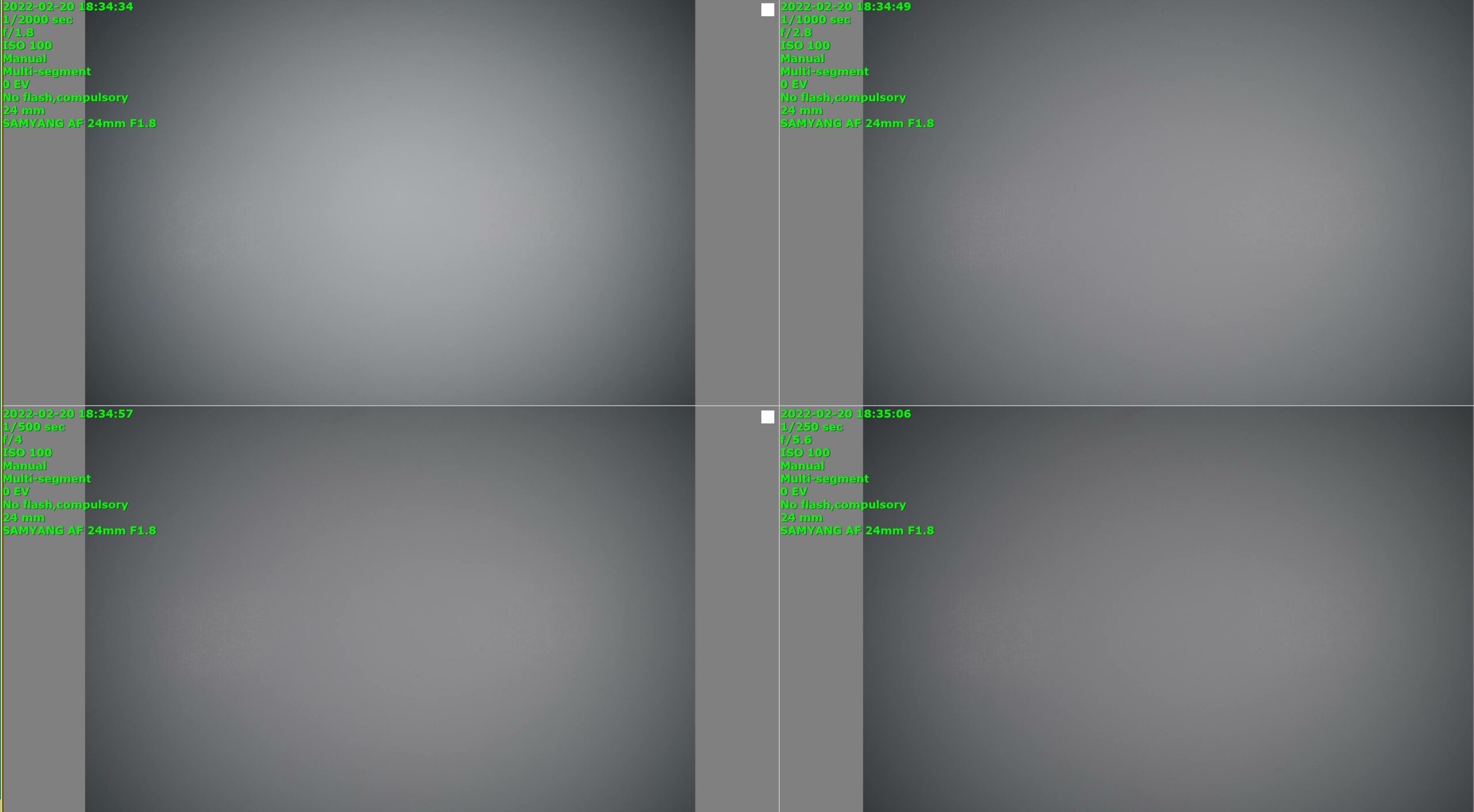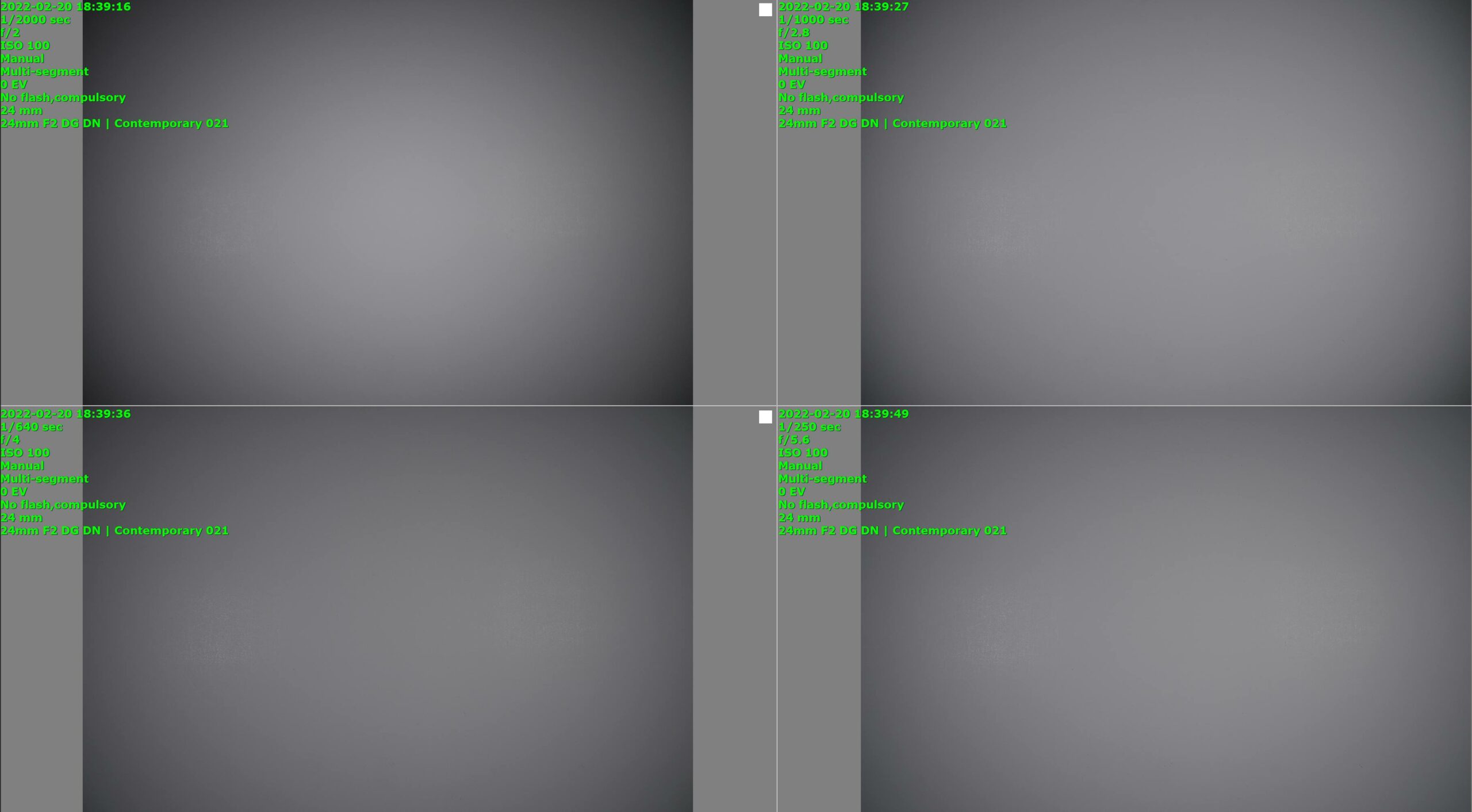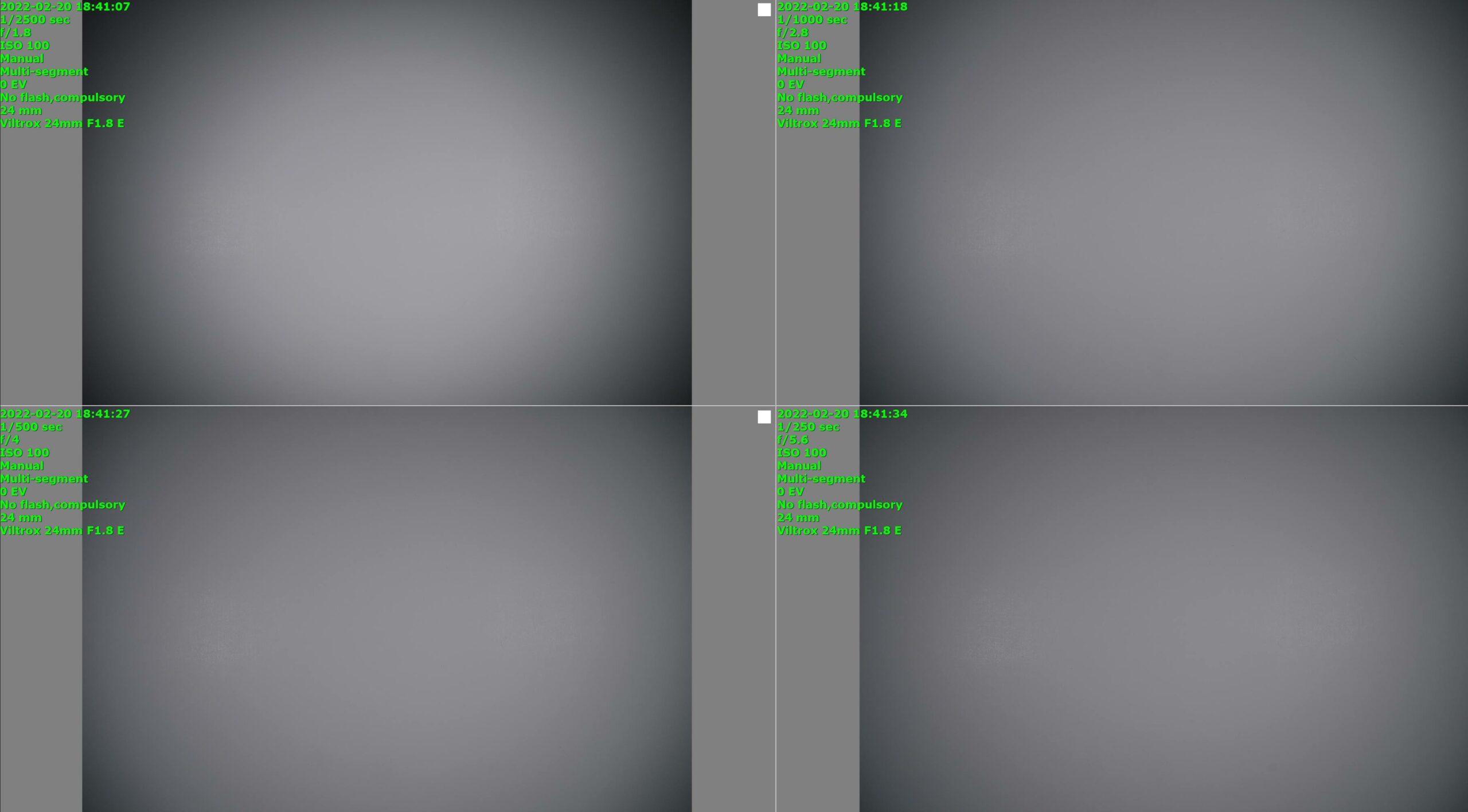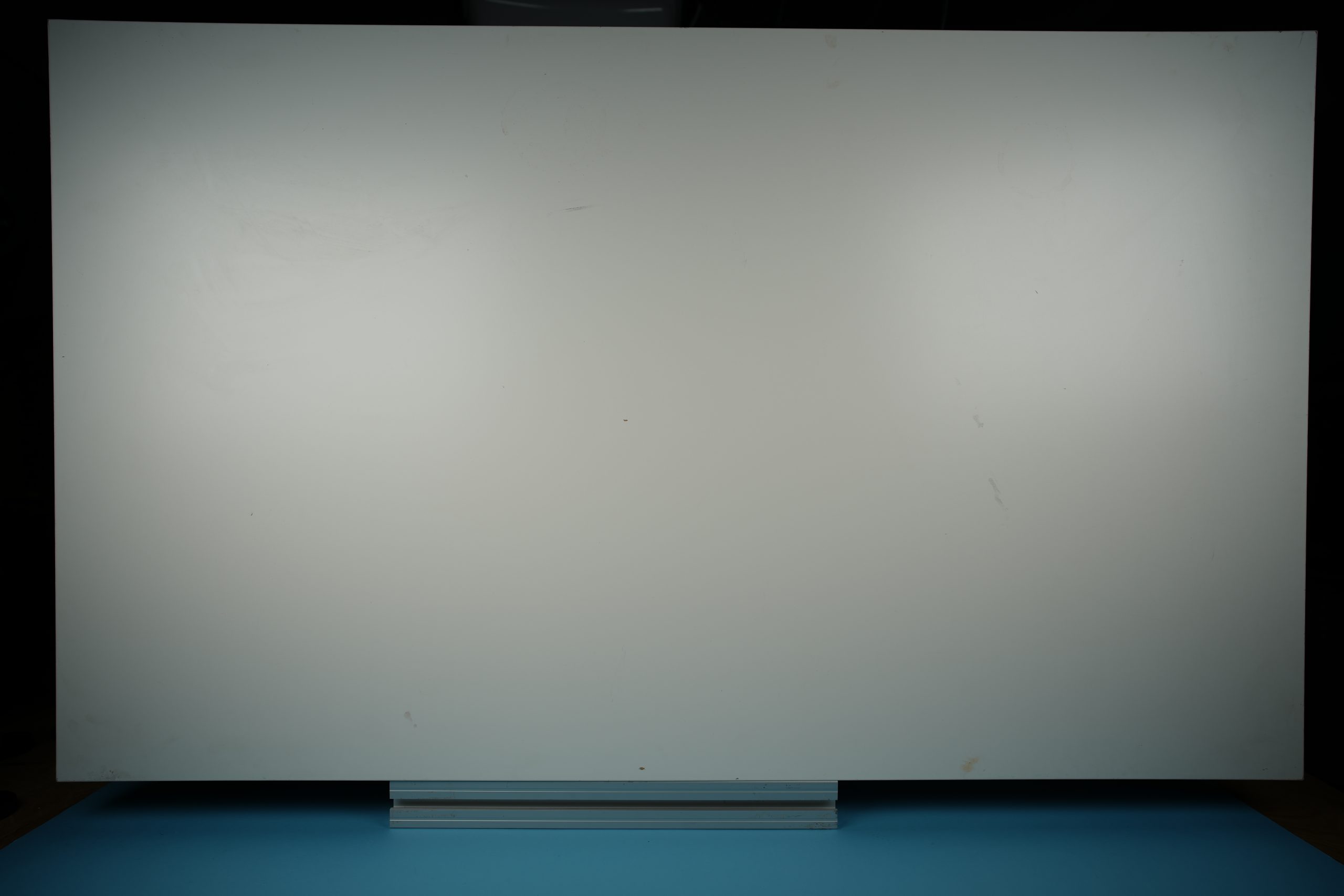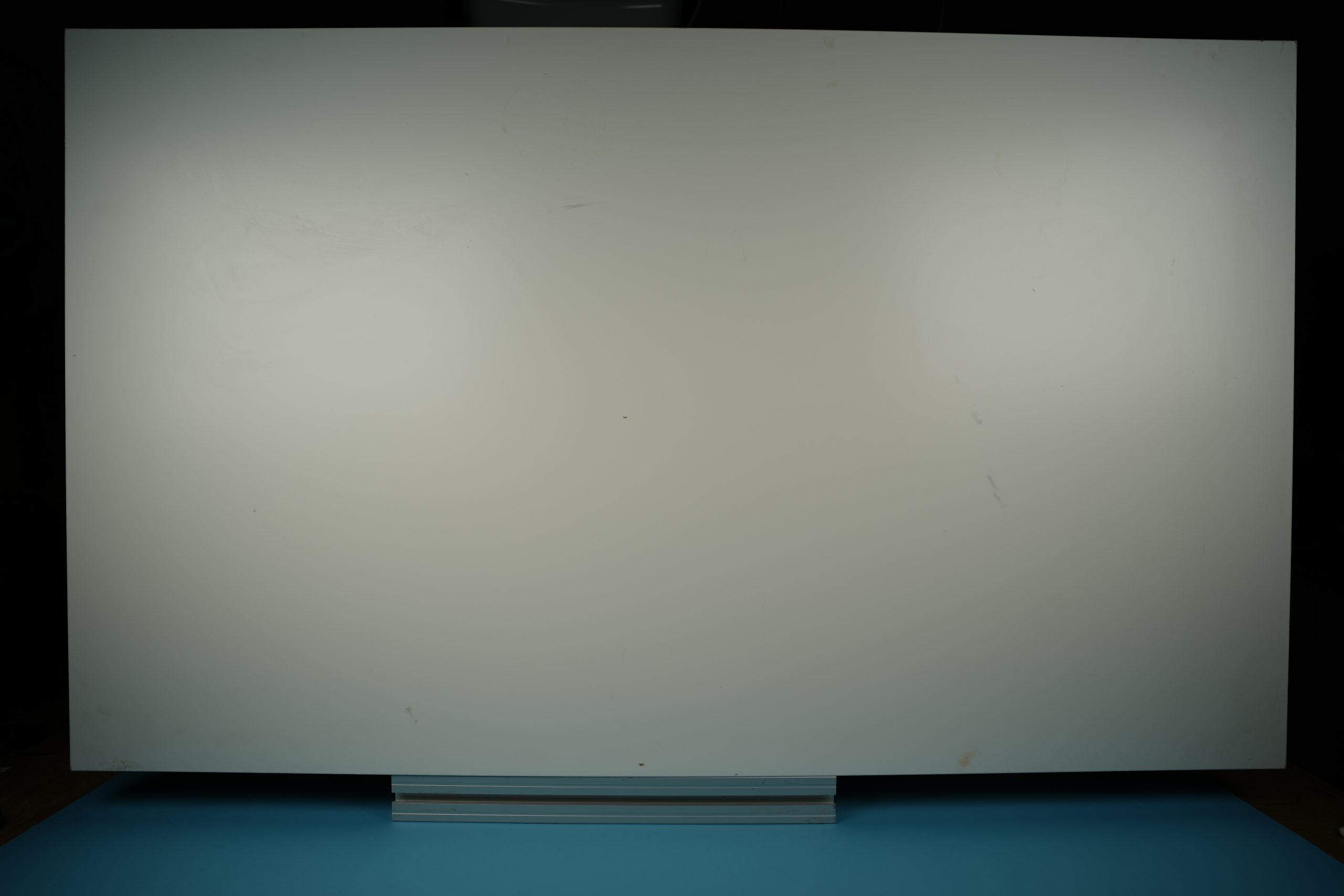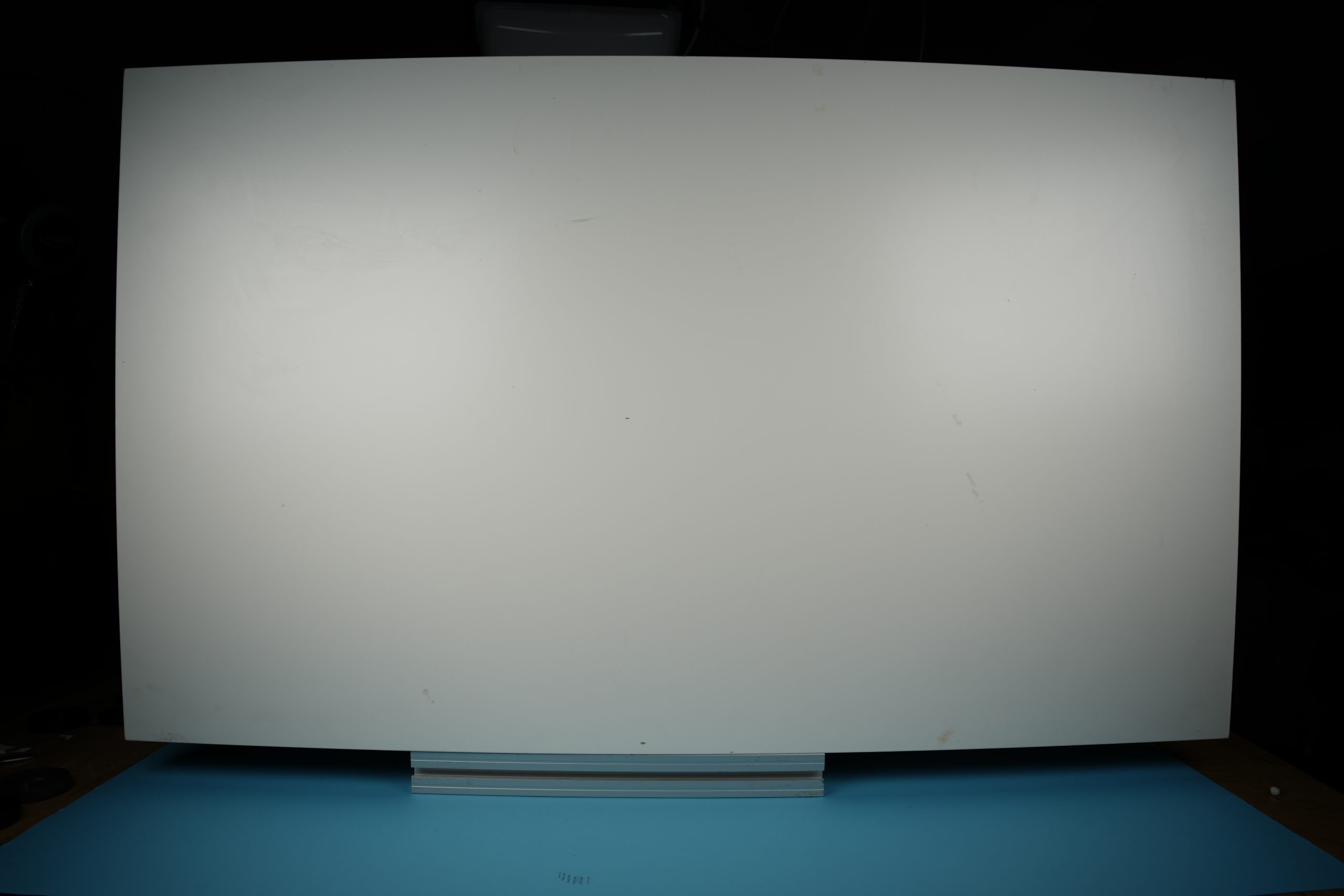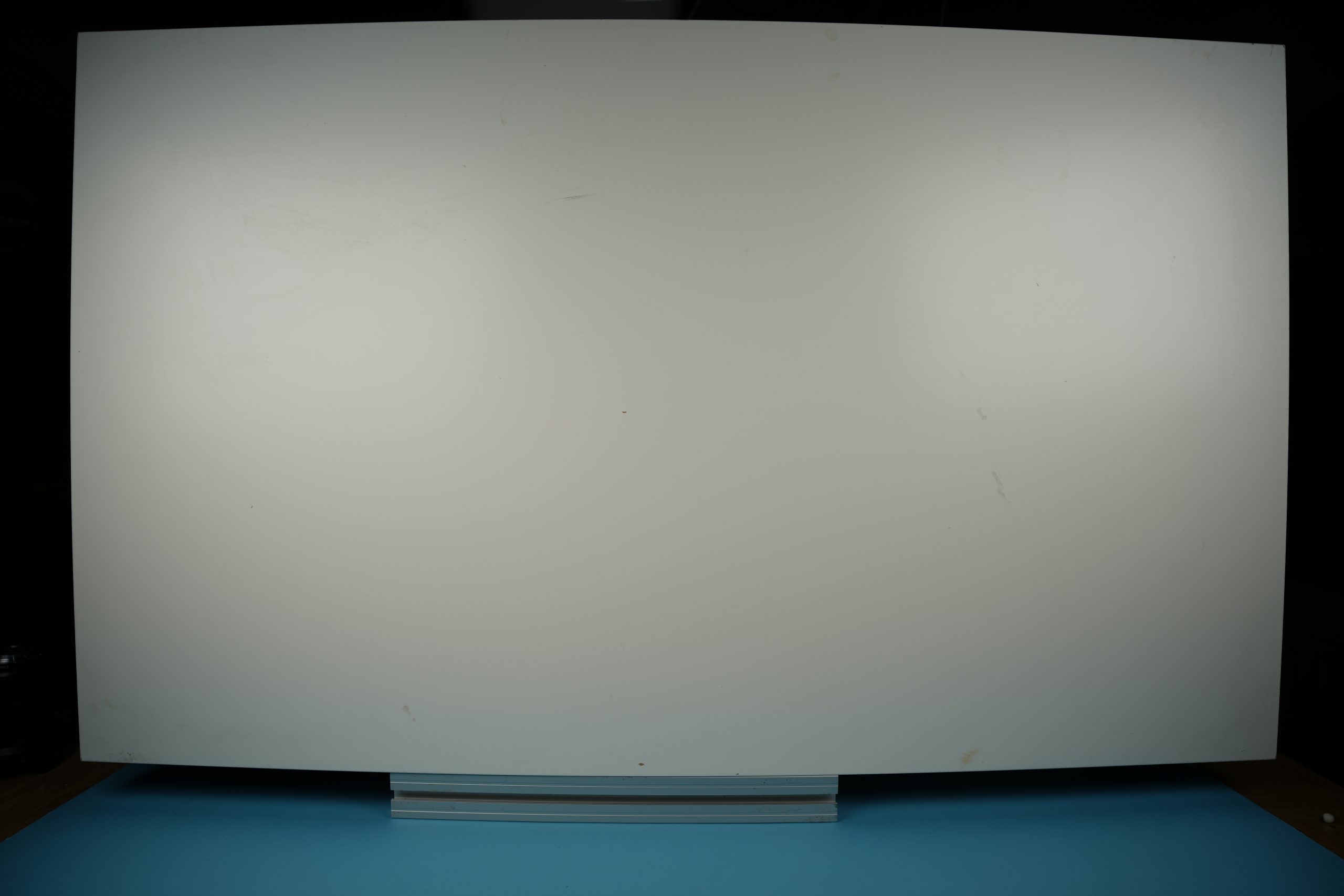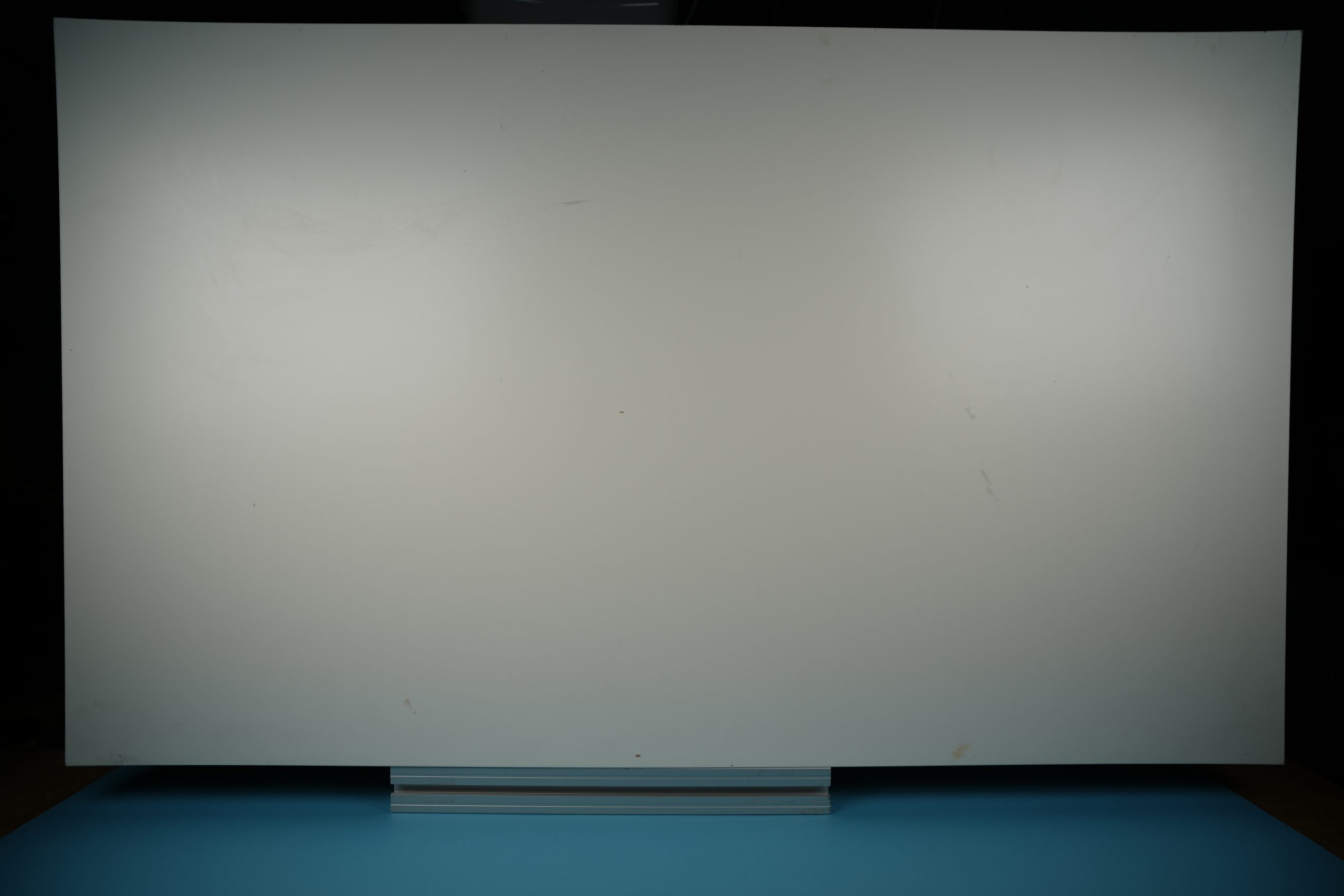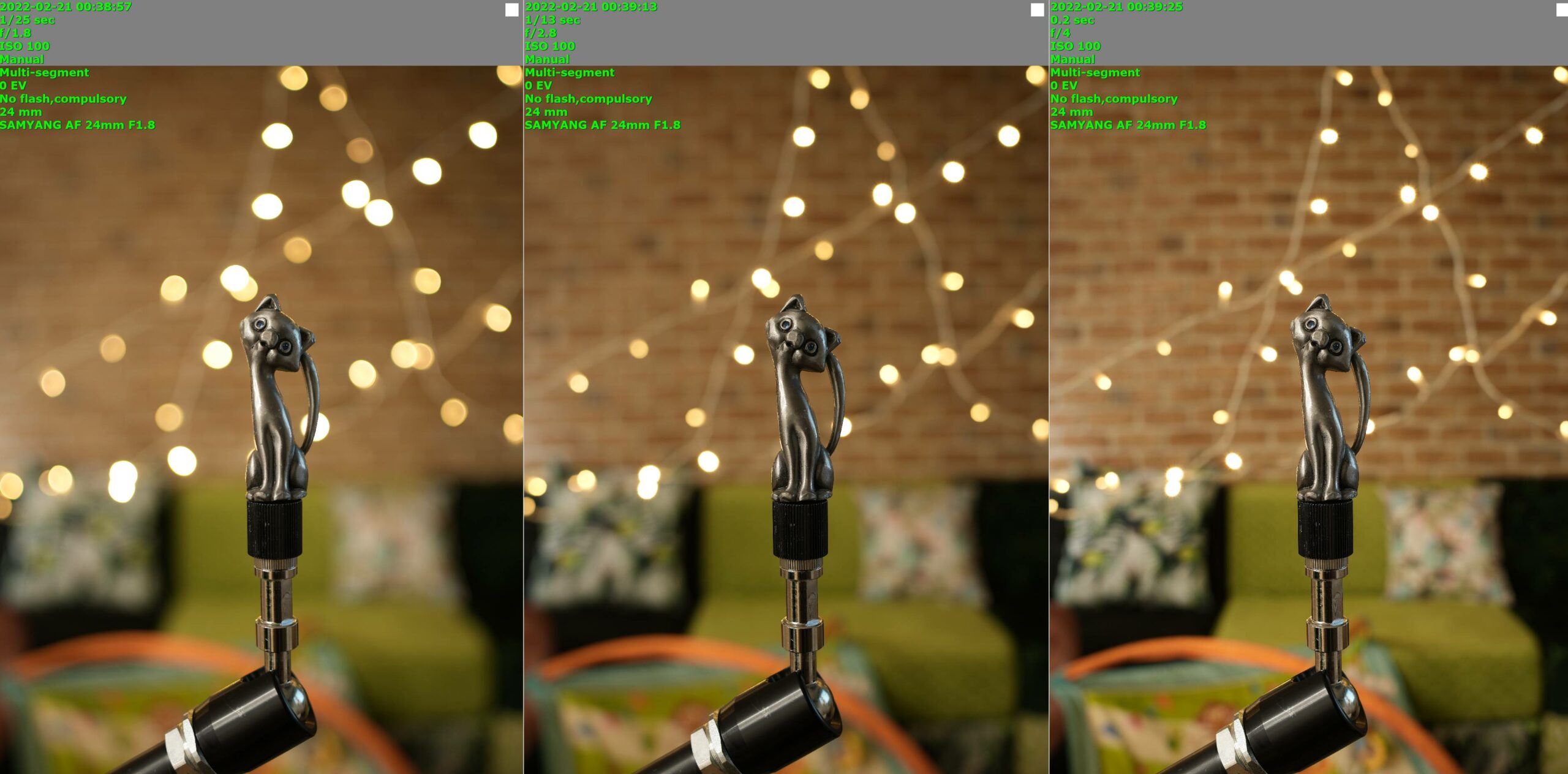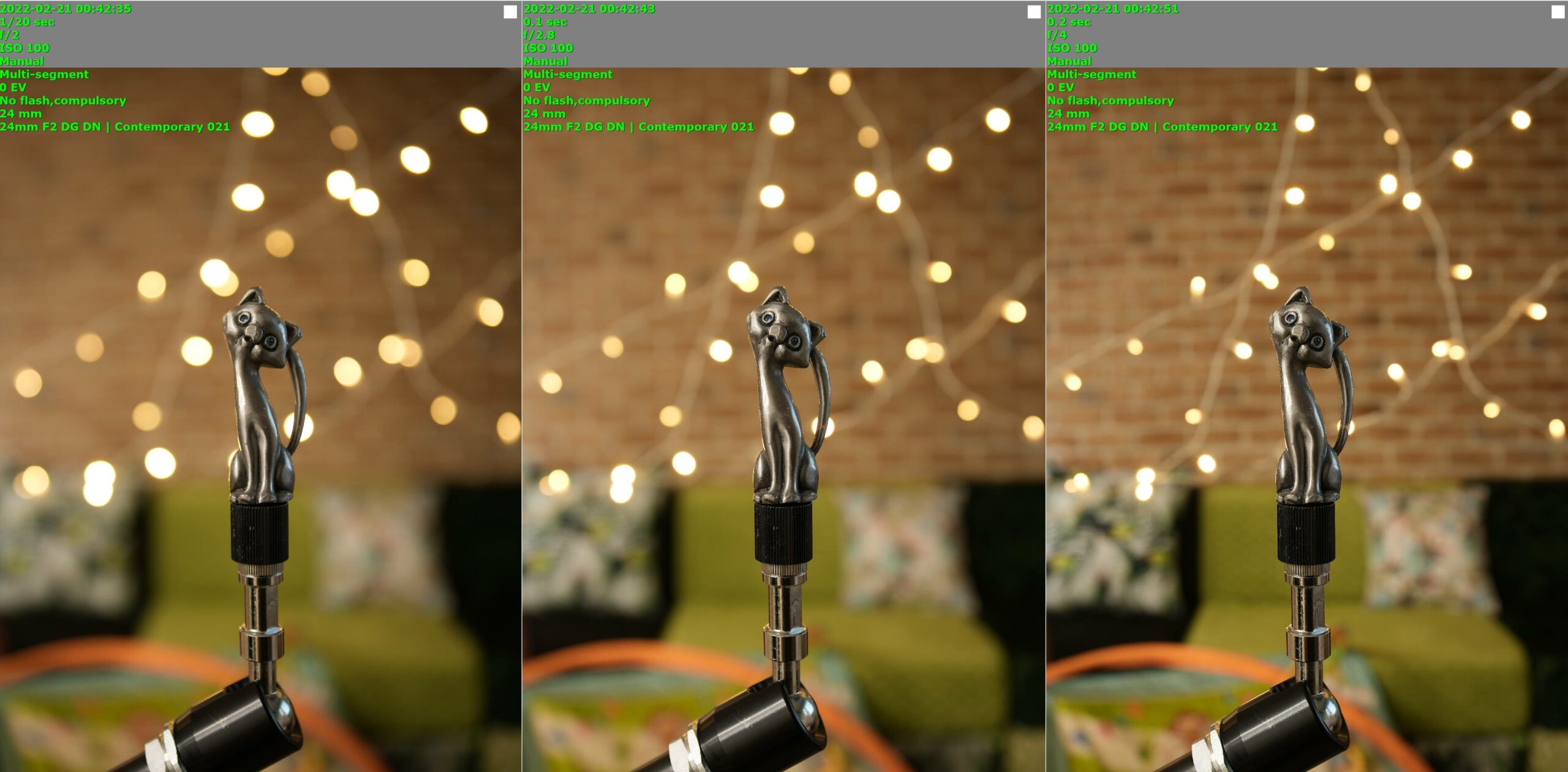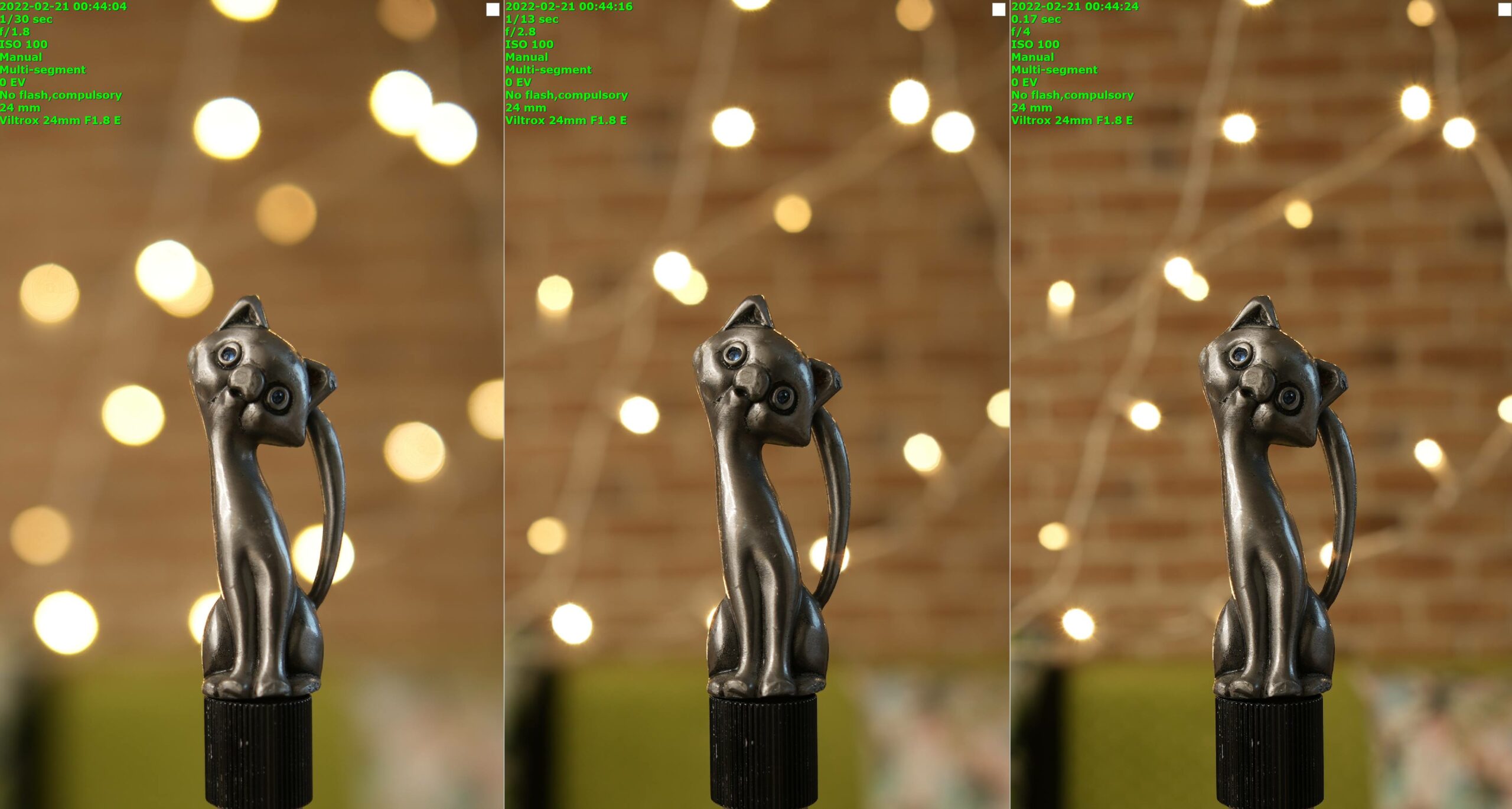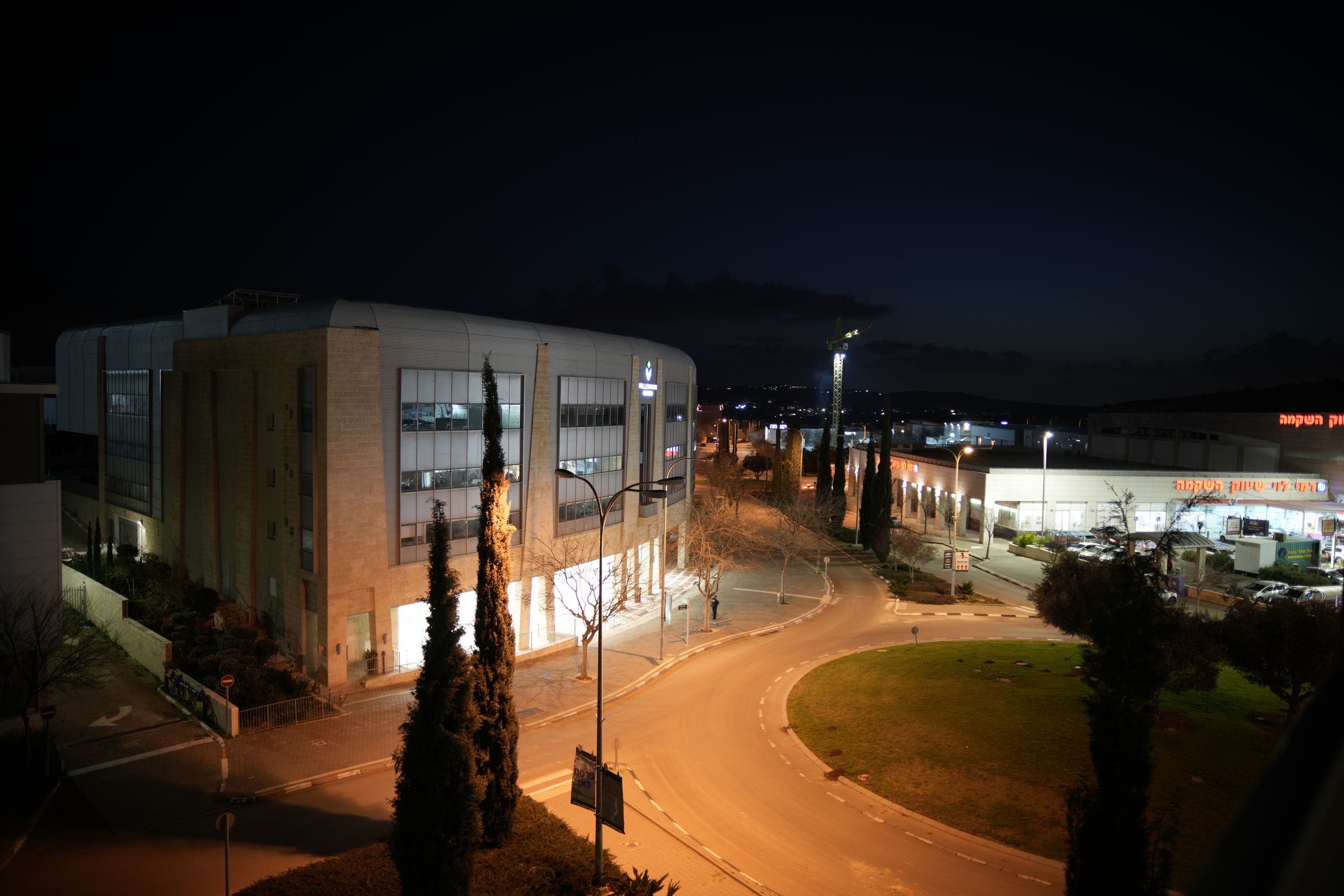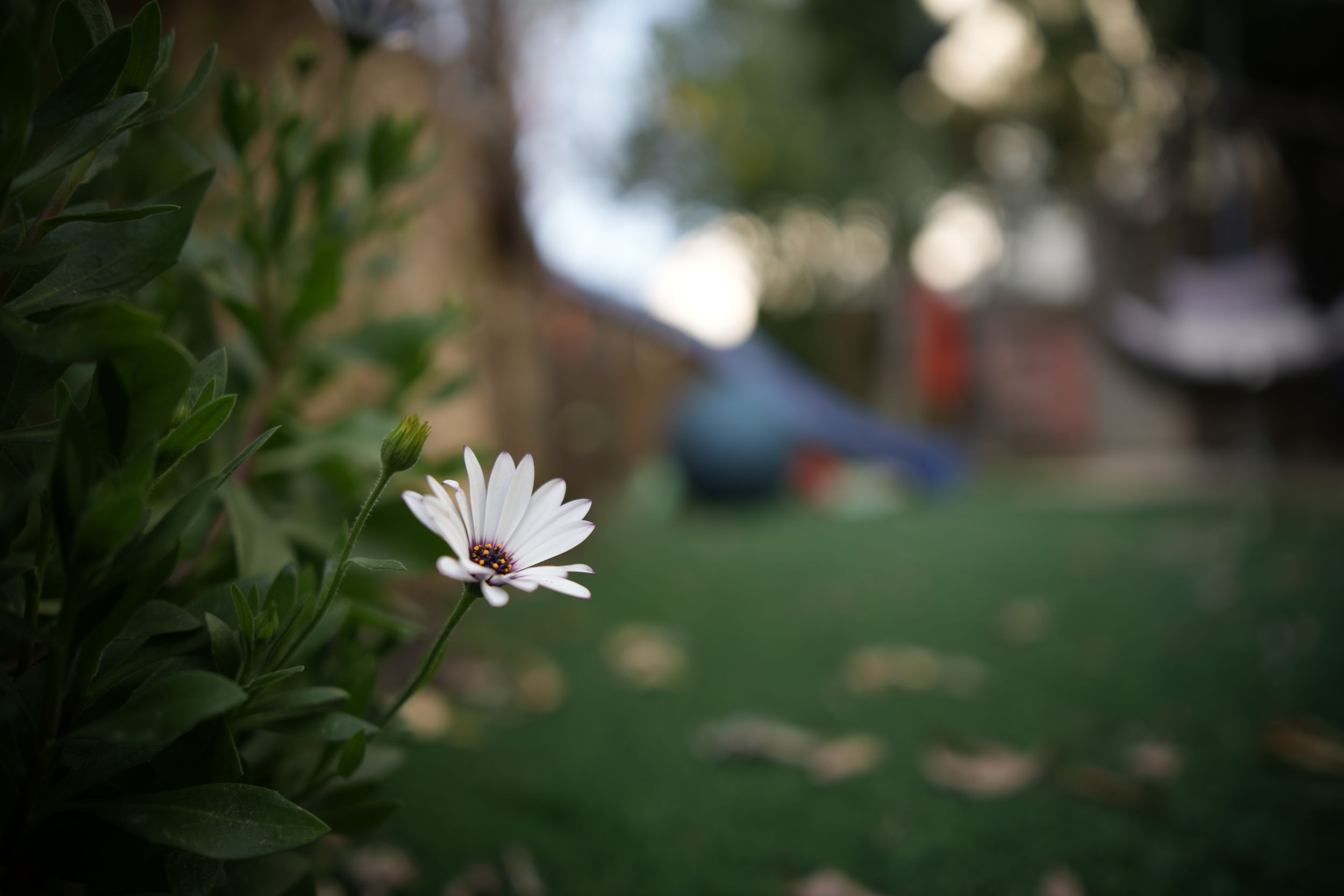Today we are proud to bring to you the most comprehensive lens review roundup we have done to date looking at five different full-frame E-mount lenses from Sony, Samyang, Tamron, Sigma, and Viltrox, all at the 24mm focal length in order to find out which is the best 24mm lens for full-frame e-mount cameras.
The lenses that we shall be reviewing today are the following:
- Sony FE 24mm F1.4 GM
- Samyang AF 24mm F1.8 FE
- Tamron 24mm F/2.8 Di III OSD M1:2 (Model F051)
- Sigma 24mm F2 DG DN | Contemporary
- Viltrox AF 24mm F1.8 FE
All 5 lenses in our test

There are two full-frame 24mm E-mount lenses that we, unfortunately, didn’t have a chance to include in this review roundup and those are the Sony FE 24mm f/2.8 G lens and Samyang 24mm f/2.8. Both are actually smaller and more compact than any of the lenses that we tested here and we hope to review them in the future.
As always, we will start with the design and build of these five lenses before we move over to performance.
Optical Design
Looking at the optical design of all five lenses the Sony incorporates the most elements although not the most “special” elements, a title that is reserved for the Samyang. We shall see later on how all of those are reflected in the image quality of these lenses.
- Sony FE 24mm F1.4 – 13 elements in 11 groups (2 XA Elements, 3 ED Elements).
- Samyang AF 24mm F1.8 – 11 elements in 8 groups (2 ASP elements, 3 HR elements, 2 ED elements).
- Tamron 24mm F/2.8 – 10 elements in 9 groups (3 Low Dispersion elements, 1 Aspherical element)
- Sigma 24mm F2 – 13 elements in 11 groups (2 SLD elements, 2 FLD elements and 2 glass-molded aspherical elements).
- Viltrox AF 24mm F1.8 FE – 11 elements in 9 groups (2 aspherical elements and 2 ED elements).
The Tamron 24mm f/2.8 on the Sony A7R IV

Materials and build
The Sony Samyang and Tamron are all made of plastic however it is clear that the Sony has a much more robust premium build.
The Sigma and Viltrox are both made from metal. The Sigma is built using Magnesium alloy and is extremely well made like the rest of the company’s i-series of lenses. The Viltrox is nicely made although doesn’t seem to have quite the same attention to detail and this reflects in things such as the hood and aperture ring which we shall discuss later.
The metal Viltrox 24mm f/1.8

Size and weight
When it comes to weight the Samyang takes the lead with 266g followed by the Tamron at 275g (the two 24mm f/2.8 lenses that we mentioned from Samayng and Sony are even lighter). The Viltrox is also fairly light for its size at 385g while the Sigma full metal robust body weighs in at 426g. Unsurprisingly the fast Sony is the heaviest lens in this group at just over half a kilogram.
Lenses weight (including caps and hood)
- Sony FE 24mm F1.4 -504g / 17.7oz
- Samyang AF 24mm F1.8 – 266g / 9.3oz
- Tamron 24mm F/2.8 – 275g / 9.7oz
- Sigma 24mm F2 -426g / 16.2oz
- Viltrox AF 24mm F1.8 FE – 385g / 13.5oz
As for size, without the caps and hood, all the lenses are almost identical in size at around 8cm with the Tamron being slightly shorter at around 7cm and the Sony somewhat longer at around 10cm.
Lenses length (with and without hood)
- Sony FE 24mm F1.4 – 10cm (13cm with hood).
- Samyang AF 24mm F1.8 – 7.5cm (11cm with hood).
- Tamron 24mm F/2.8 – 7cm (9cm with hood).
- Sigma 24mm F2 – 8cm (10cm with hood).
- Viltrox AF 24mm F1.8 FE – 8.5cm (11cm with hood).
Rings
The Samyang and Tamron have only a single ring while all three other lenses have both focus and aperture rings.
The Sony has a fantastic, smooth, and responsive focus ring with great resistance. It is also the only one with a de-click option for its narrow but still very well-made aperture ring.
The Sony 24mm f/1.4 – with its dual ring
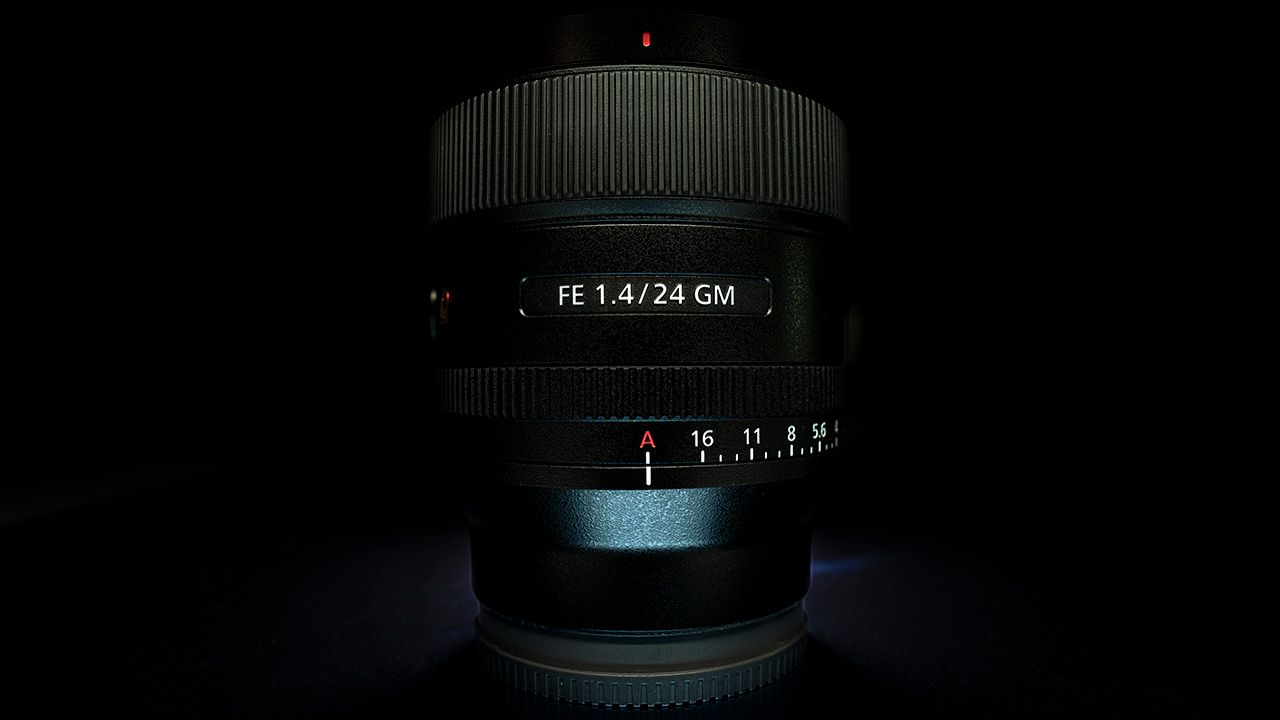
The Samyang focus/aperture ring (depending on the mode, more on this in a moment) offers a bit more resistance than the Sony and is not as smooth, but it still functions pretty well. Just like the focus Viltrox lens, the ring on the Samyang seems to lack a bit of texture for better grip.
The Tamron has a nice thick and grippy focus ring similar to the Sony although it might not be built as well and quite as smooth, but it seems to work very well.
The Sigma has two metal rings like the rest of the i-series to which it belongs. The front one controls the focus and it is a little too close to the hood in our opinion. The aperture rings move in nice satisfactory audible clicks and can also be set to auto mode if you prefer to control it from the camera (the Sony and Viltrox have this function as well).
The Viltrox has the thickest focus ring (all metallic) with a great deal of resistance. The aperture ring on our sample acted in a very strange way. It had no clicks but you can hear loud noises when it was turning, so we simply left it on auto mode all the time.
Buttons and switches
The Tamron and Viltrox lenses have no buttons or switches and the Sigma only has an AF/MF switch.
The Samyang and Sony are a bit more interesting in this respect. Both have a programmable focus hold button, however, the Samyang has a custom switch that allows the user to switch between aperture control and MF. This feature didn’t work for us and we would just prefer a normal AF/MF switch.
The custom switch on the Samyang 24mm f/1.8
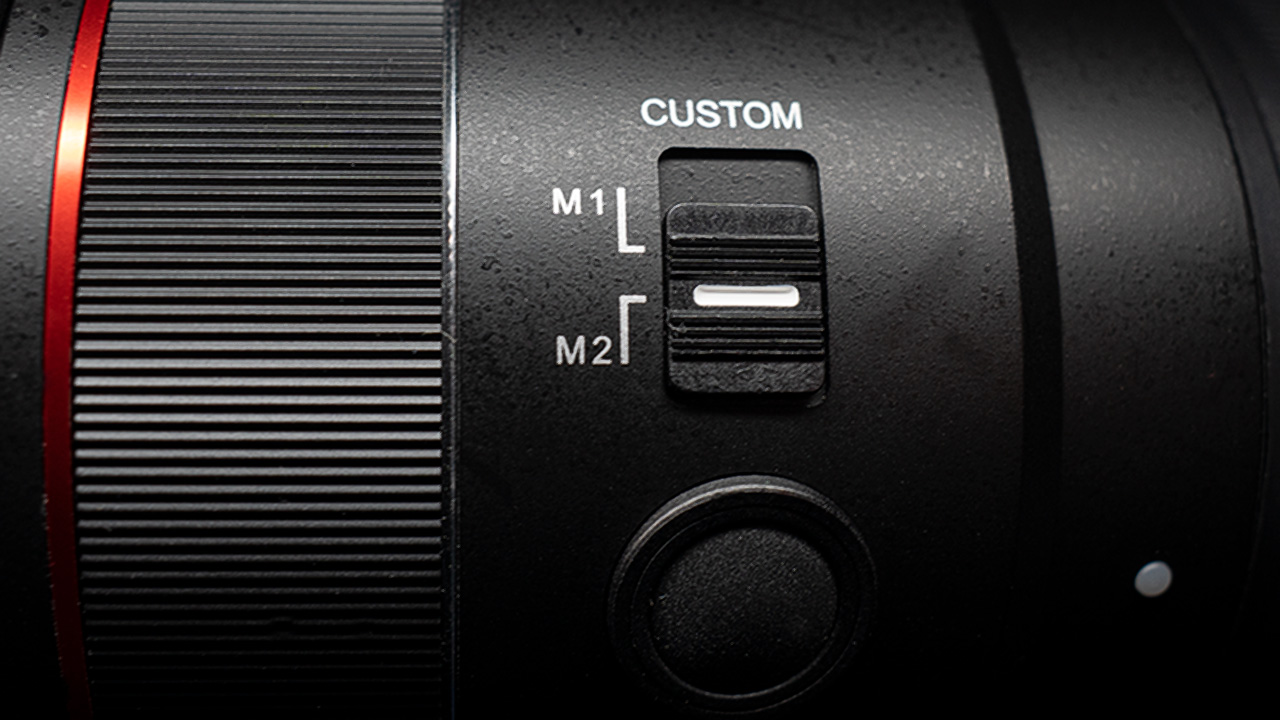
The Sony does come with an AF/MF switch, a focus hold button as well as a de-click switch on the other side.
The Sony 24mm f/1.4 GM de-click switch

Sealing
From what we can gather the Tamron and Viltrox lenses do not seem to include weather sealing. All of the other three lenses seem to include at least a gasket on the mount and offer some level of weather sealing.
Mount
The Sony, Tamron and Samyang currently only come in an E-mount version. The Sigma also comes in an L mount and the Viltrox interestingly also comes in a Nikon Z-mount.
All lenses come with a metal mount but the Viltrox has a USB-C connection for firmware updates next to the mount which is an interesting design choice.
The USB-C connector next to the Viltrox mount

Hood
All lenses besides the Sigma come with a plastic hood. The Sigma has a nice metal hood like the rest of the i-series. It is worth mentioning that the Sony is the only one with soft dark fabric inside the hood (reminiscent of some Zeiss lenses) and also a button for unlocking the hood.
Aperture
When it comes to aperture blades, the Sigma, Samyang, and Viltrox all have 9 blades while the Tamron has only 7 and the Sony has 11. We will see later on how this will be reflected in our bokeh test.
The Sigma 24mm f/2 on the A7R IV

Filter
When it comes to filter thread sizes both the large and fast Sony and the smaller and slower Tamron share a common 67mm thread which is quite comical given the difference in the size of their front elements.
The Sigma uses a 62mm filter, the Samyang 58mm and the Viltrox has a small 55mm front filter thread.
Performance
Focusing
When it comes to focusing we looked at several different aspects of each one of the lenses. First, we wanted to see the focus throw of each lens when manually focusing (all use focus by wire by the way):
- Sony FE 24mm F1.4 – About 180 degrees.
- Samyang AF 24mm F1.8 – About 180 degrees
- Tamron 24mm F/2.8 – Almost 360 degrees.
- Sigma 24mm F2 – Between 270-450 degrees (Nonlinear).
- Viltrox AF 24mm F1.8 FE – 270 degrees.
As you can see there are big differences here between lenses and what we discovered is that the Sigma has a nonlinear focus so if you turn the focus ring slower the focus throw will be much longer compared to turning it more quickly. This is not ideal for focus pulling and we are not sure if this can somehow be resolved by firmware or by some sort of camera setting.
Next, we wanted to test the AF in both good and poor lighting conditions using our Sony A1 camera when shooting stills and video.
Looking at our test results, it was nice to see that none of the lenses had too much trouble focusing on our target even in low lighting conditions, however, we did notice a few things.
Unsurprisingly, the Sony lens seems to have the best AF, fast, silent, and accurate, but also much smoother with a very gradual change in video which none of the other lenses exhibited (mind you we didn’t change any of the AF settings during our test).
The Samyang, Sigma, and Viltrox all impressed us with fast and silent AF although we didn’t see the same smoothness as we did with the Sony. In stills the Sigma was super impressive being even faster to focus than the Sony.
The only lens which did not impress us in this test was the Tamron. Its AF motor is audible and moves in steps and doesn’t seem to be on the same level as those found in the other lenses.
Image stabilization
None of the lenses that we tested come with image stabilization and we are not aware of any 24mm prime lens which includes this feature.
Sharpness
We tested the sharpness of all lenses using our special large professional Imatest high-end chart on our Sony A1 in different apertures.
There is no simple way of comparing so many lenses with so many different apertures so we will do our best to share examples and give our comparative impressions.
- Sony FE 24mm F1.4 – Wide open at f/1.4 in the center the Sony is extremely sharp. The corners are also very sharp although with camera corrections turned off they are also pretty dark. There is almost no sharpness to gain by closing down this lens in the center or the corners which is truly exceptional for such a fast wide lens.
Sony center sharpness – top left f/1.4; top right f/1.8; bottom left f/2.8; bottom right f/4
Sony corner sharpness – top left f/1.4; top right f/1.8; bottom left f/2.8; bottom right f/4
- Samyang AF 24mm F1.8 – The Samyang is a tad soft at f/1.8 in the center, it improves a little at f/2.8 and gets very sharp at f/4. In the corners, the lens is a little soft at f/1.8 and improves considerably at f/2.8.
Samyang center sharpness – top left f/1.8; top right f/2.8; bottom left f/4; bottom right f/5.6
Samyang corner sharpness – top left f/1.8; top right f/2.8; bottom left f/4; bottom right f/5.6
- Tamron 24mm F/2.8 – The Tamron is fairly sharp in the center at f/2.8 and becomes very sharp at f/4. In the corners, however, you will need to go to f/5.6 for very good sharpness and f/8 for maximum detail. Please note that the Tamron is visibly wider than the other lenses (we would say that if the other lenses are indeed 24mm, the Tamron is at least 22mm).
Tamron center sharpness – top left f/2.8; top right f/4; bottom left f/5.6; bottom right f/8
Tamron corner sharpness – top left f/2.8; top right f/4; bottom left f/5.6; bottom right f/8
- Sigma 24mm F2 – The Sigma is also very sharp in the center at f/2, gaining a tiny bit more sharpness at f/2.8. The corners seem to be sharp, even wide open – very impressive.
Sigma center sharpness – top left f/2; top right f/2.8; bottom left f/4; bottom right f/5.6
Sigma corner sharpness – top left f/2; top right f/2.8; bottom left f/4; bottom right f/5.6
- Viltrox AF 24mm F1.8 FE – The Viltrox is fairly soft in the center at f/1.8, it improves a little at f/2.8 and gets maximum sharpness around f/4. In the corners, the lens gets good sharpness from around f/2.8 and maximum sharpness at f/5.6.
Viltrox center sharpness – top left f/1.8; top right f/2.8; bottom left f/4; bottom right f/5.6
Viltrox corner sharpness – top left f/1.8; top right f/2.8; bottom left f/4; bottom right f/5.6
Close up performance
For our close-up performance test, we used our new testing rig which includes special rulers with small electrical components. Before we go into the sharpness data here are the minimum focus distance numbers we measured from the sensor of the camera as well as the official macro magnification numbers.
- Sony FE 24mm F1.4 – 23.5cm / magnification 1:5.8.
- Samyang AF 24mm F1.8 – 20.5cm / magnification 1:5.2.
- Tamron 24mm F/2.8 – 11.5cm / magnification 1:2.
- Sigma 24mm F2 – 21cm / magnification 1:6.7.
- Viltrox AF 24mm F1.8 FE – 29cm / magnification 1:10.
As you can see the Tamron has a clear advantage over all of the other lenses we are testing when it comes to close-up and macro capabilities. Just remember that to get that 1:2 magnification the front element of the lens will be about 3cm (1.25″) away from the target which can cast a shadow or block some of the light going to your subject.
Now let’s take a look at close-up sharpness:
- Sony FE 24mm F1.4 – Close up wide open at f/1.4 in the center the Sony is just a tiny bit soft, closing down to f/2.8 makes the image very sharp (even at f/1.8 the image is sharp). The corners reach peak sharpness around f/2.8-f/4.
Sony close up sharpness test – top left f/1.4; top right f/1.8; bottom left f/2.8; bottom right f/4
- Samyang AF 24mm F1.8 – The Samyang is a little soft in the center close up wide open. Closing down to f/2.8 improves the sharpness significantly. In the corners, you will need to close down to f/4 for good sharpness close up.
Samyang AF 24mm F1.8 – close up sharpness test – left to right – f/1.8, f/2.8, and f/4
- Tamron 24mm F/2.8 – The Tamron is not super sharp in the center close up at f/2.8 or f/4 and you might need to close down even further if you want maximum sharpness. The corners show a similar story. It is also possible that at such a close distance we are also seeing the effects of field curvature.
Tamron 24mm F/2.8 – close sharpness test – CA test – left f/2.8, right f/4
- Sigma 24mm F2 – The Sigma is not very sharp in the center at f/2 close up, but it gains quite a bit more sharpness at f/2.8 and reaches maximum sharpness at f/4. In the corners, things are pretty much the same.
Sigma 24mm F2 – close sharpness test – CA test – left to right – f/2, f/2.8, and f/4
- Viltrox AF 24mm F1.8 FE – The Viltrox is fairly soft in the center at f/1.8 close-up, however, at f/2.8 the lens is very sharp both in the center and the corners (with a slight improvement in the corners at f/4).
Viltrox AF 24mm F1.8 FE – close sharpness test – left to right – f/1.8, f/2.8, and f/4
Breathing
We tested breathing on all of the lenses with the Sony A1. As you can see in our video footage the Sony, Tamron, and Sigma all have very significant breathing.
The Viltrox has only slight breathing and the Samyang is on another level here with almost no breathing at all.
It is worth mentioning that with the A7 IV you can use breathing compensation with the Sony 24mm GM but you will lose a small percentage of the frame so keep this in mind (we are still waiting for this feature to come to our A1 and other Sony cameras).
Chromatic aberrations
We tested all five lenses for longitudinal chromatic aberrations and surprisingly none seem to have any significant CA which is certainly nice to see.
Sony FE 24mm F1.4 CA test – top left f/1.4; top right f/1.8; bottom left f/2.8; bottom right f/4
Samyang AF 24mm F1.8 – CA test – left to right – f/1.8, f/2.8 and f/4
Tamron 24mm F/2.8 – CA test – CA test – left f/2.8, right f/4
Sigma 24mm F2 – CA test – CA test – left to right – f/2, f/2.8, and f/4
Viltrox AF 24mm F1.8 FE – CA test – left to right – f/1.8, f/2.8 and f/4
Flare
In our test all of these wide-angle lenses showed pretty prominent flare, however, there are still some differences that are worth exploring.
- Sony FE 24mm F1.4 – The Sony shows several small green flares in the center wide open.
- Samyang AF 24mm F1.8 – Wide open the Samyang has larger but less prominent red and purple flare circles.
- Tamron 24mm F/2.8 – The Tamron also has a larger soft flare wide open which is mostly red and green.
- Sigma 24mm F2 – The Sigma’s flare is relatively well controlled with a large soft circle and two small green flares in the center.
- Viltrox AF 24mm F1.8 FE – The Viltrox has a ton of flare with several large red circles. We would be very careful using this lens against bright light sources.
Vignette
Testing wide-angle lenses for vignette has always been difficult and looking at the results that we got emphasizes this problem. Since Sony cameras have a pretty good built-in vignette correction (and it is fairly easy to correct in post) we are not too worried about the accuracy of this test, especially at more closed apertures. Mind you in-camera corrections were turned off for this test.
- Sony FE 24mm F1.4 – The Sony has quite a bit of vignette wide open and closing down to f/2.8 clears a lot of it. As we mentioned we would disregard our f/4 test here.
Sony FE 24mm F1.4 vignette test – top left f/1.4; top right f/1.8; bottom left f/2.8; bottom right f/4
- Samyang AF 24mm F1.8 – The Samyang has a relatively low vignette wide open which goes down gradually by f/4 although it doesn’t disappear completely.
Samyang vignette test – top left f/1.8; top right f/2.8; bottom left f/4; bottom right f/5.6
- Tamron 24mm F/2.8 – For an f/2.8 lens the Tamron has a lot of vignette wide open which seems to clear mostly between f/5.6 and f/8.
Tamron vignette top left f/2.8; top right f/4; bottom left f/5.6; bottom right f/8
- Sigma 24mm F2 – The Sigma shows very good vignette performance with relatively little vignette wide open which gets significantly down between f/2.8 and f/4 and disappears completely at around f/5.6.
Sigma vignette – top left f/2; top right f/2.8; bottom left f/4; bottom right f/5.6
- Viltrox AF 24mm F1.8 FE – The Viltrox has a very dark vignette wide open which clears somewhere between f/4 and f/5.6.
Viltrox vignette – top left f/1.8; top right f/2.8; bottom left f/4; bottom right f/5.6
Barrel distortion
We looked at the geometric distortion of each lens and discovered some interesting things (all with camera corrections turned off).
- Sony FE 24mm F1.4 – The Sony is almost completely free of geometric distortion. If anything the lens actually has a little pincushion distortion which is not common for wide-angle lenses.
Sony barrel distortion
- Samyang AF 24mm F1.8 – The Samyang also shows pretty good results in this test with relatively little barrel distortion.
Samyang barrel distortion
- Tamron 24mm F/2.8 – The Tamron with its wider angle has a very significant barrel distortion.
Tamron barrel distortion
- Sigma 24mm F2 – The Sigma is not as wide as the Tamron but the barrel distortion it exhibits is quite similar.
Sigma barrel distortion
- Viltrox AF 24mm F1.8 FE – The Viltorx is almost free of geometric distortion with very minor pincushion distortion on the top edges of the frame.
Viltrox barrel distortion
Bokeh
We tested the Bokeh of all five lenses and found some interesting things:
- Sony FE 24mm F1.4 – The Sony has fantastic clean round circles near the center of the frame wide open which turn oval as you move away from the center. At f/1.8 you get the best balance of large light circles with more circular shapes.
Sony FE 24mm F1.4 bokeh test – top left f/1.4; top right f/1.8; bottom left f/2.8; bottom right f/4
- Samyang AF 24mm F1.8 – with the Samyang we discovered that although the out-of-focus areas look good and the light circles are clean, they are not particularly round even close to the center (and becomes small at around f/2.8).
Samyang AF 24mm F1.8 bokeh test – left to right – f/1.8, f/2.8, and f/4
- Tamron 24mm F/2.8 – With the Tamron you will need to get very close to your subject to achieve out-of-focus background. The light circles are quite small and not very circular due to the lens closed aperture.
Tamron 24mm f/2.8 bokeh test – left f/2.8, right f/4
- Sigma 24mm F2 – The Sigma has clean light circles that become mostly round at about f/2.8 but they are never as large as those of the Sony.
Sigma 24mm F2 bokeh test – left to right – f/1.8, f/2.8 and f/4
- Viltrox AF 24mm F1.8 FE – With the Viltrox at f/1.8 you get fairly large light circles that are mostly round near the center although they do have some onion rings.
Viltrox 24mm F1.8 – bokeh test – left to right – f/1.8, f/2.8, and f/4
Sample images
We had a chance to shoot with each of the five lenses on our Sony A1 and you can see some images below including two sets of day and night shots we took from the same position on a tripod with all 5 lenses (please note how much wider the Tamron is compared to the other lenses).
Day shots comparison
Sony 24mm
Samyang 24mm
Tamron 24mm
Sigma 24mm
Viltrox 24mm
Night shots comparison
Sony 24mm
Samyang 24mm
Tamron 24mm
Sigma 24mm
Viltrox 24mm
Here are a few more sample images with each lens (resized, unedited)
Sony 24mm samples
Samyang 24mm samples
Tamron 24mm samples
Sigma 24mm samples
Viltrox 24mm samples
Conclusion
So what is the best 24mm lens? well, this was an extremely long comparison so we will try and provide a brief summary of each lens based on our tastings with its pros and cons.
- Sony FE 24mm F1.4 – The Sony 24mm f/1.4 GM is unsurprisingly the big winner of this roundup. It has outstanding optical performance, superb AF, great build quality, and nice features and it certainly deserves its G Master title.
The only drawbacks of this lens aside from the high price are the breathing performance (currently corrected with the A7 IV), and mediocre close-up and macro capabilities (although the actual image quality close-up is very good). - Samyang AF 24mm F1.8 – The Samyang 24mm is a very attractive compact offering by the company. If you are willing to work from around f/2.8 or above you are getting a very sharp lens, with nice close-up performance, low vignette, and fairly controlled flare with practically no breathing.
While the AF isn’t on the same level as the Sony it seemed to perform fairly well in our test and aside from the rather basic build quality, the only thing we didn’t like about this lens is the custom switch which can be really annoying sometimes. - Tamron 24mm F/2.8 – The Tamron 24mm f/2.8 is the least expensive of the lenses we tested. With that said the lens is quite sharp at f/2.8 and very sharp at f/4 in the center of the frame. Its biggest selling point is no debut its super close-up distance and 1:2 macro capabilities, but just remember that you will need to close down quite a bit (f/5.6 or higher) for sharp results close up. With such a low-priced lens it is no wonder that there are quite a few drawbacks to this lens. The flare, vignette, and breathing are not particularly good on the lens but most of all the AF seems not to be as good as that of the other lenses we tested being noisy and jittery. It would be really nice to see an updated version of this lens with better AF and improved optics but with the same macro capabilities, even at a higher price tag.
- Sigma 24mm F2 – The Sigma i-series continue to impress us and the 24mm f/2 is no exception. The lens is very sharp even wide open and extremely sharp at f/2.8 across the frame with very good sharpness at f/2.8 close-up. Vignette, flare, and CA are all above average and the lens has fantastic build quality. Maybe more importantly it has super-fast focus – faster even than the Sony although the Sony has the edge in video in terms of smooth transitions. There are just a few drawbacks to this lens. We don’t really care for the fact that the focus is nonlinear which can irritate video shooters, the breathing on the lens is also quite significant and it would be nice to see better macro magnification, but other than that Sigma has another winner on its hands with this lens.
- Viltrox AF 24mm F1.8 FE – This is the first FF lens from Viltrox that we are reviewing here and it is certainly nice to see more competition on the market. The lens AF actually surprised us being fairly fast and relatively accurate. Sharpness at the center is OK, especially from f/2.8 but you will need to go to f/5.6 for optimal sharpness across the frame. Breathing is also well controlled on this lens. This lens does have a few things that Viltrox will need to improve upon including vignette, flare, and close-up image quality (Viltrox seems not to prioritize macro magnification and close-up focus distance on any of its current lenses).
The five 24mm lenses for Sony cameras – something for everyone

Of course, most people will also look at the pricing as a factor when choosing which lens to get, and here is where things become even more interesting.
Pricing
The five lenses that we have reviewed today range in price from as low as $200 all the way up to $1400. This certainly means that there is a 24mm E-mount lens that fits almost any budget.
- Sony FE 24mm F1.4 – $1400.
- Samyang AF 24mm F1.8 – $450.
- Tamron 24mm F/2.8 – $200.
- Sigma 24mm F2 – $640.
- Viltrox AF 24mm F1.8 FE – $430.
It’s also worth mentioning the price of the compact 24mm f/2.8 Sony G lens that we did not get a chance to test here which sells for just under $600 and the similarly tiny Samyang 24mm F/2.8 which sells for only $200.
You can check out more LensVid exclusive articles and reviews on the following link.
